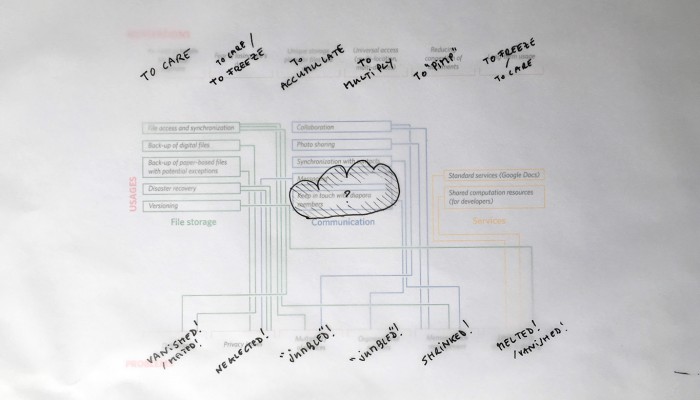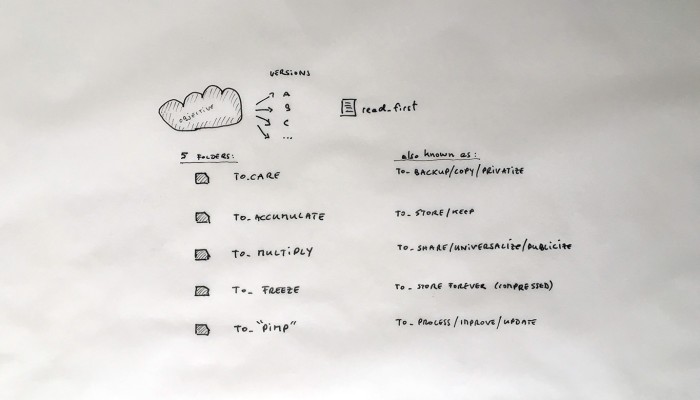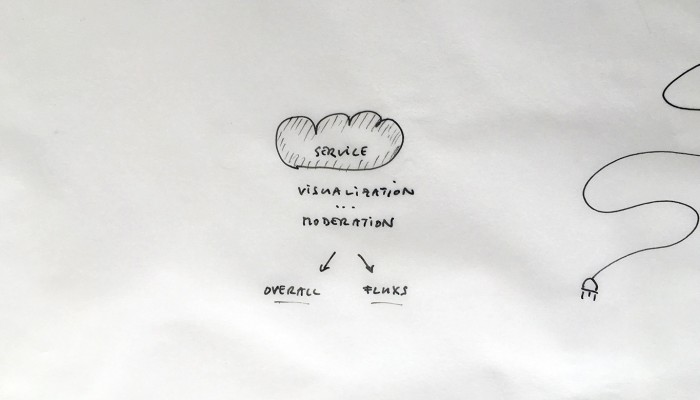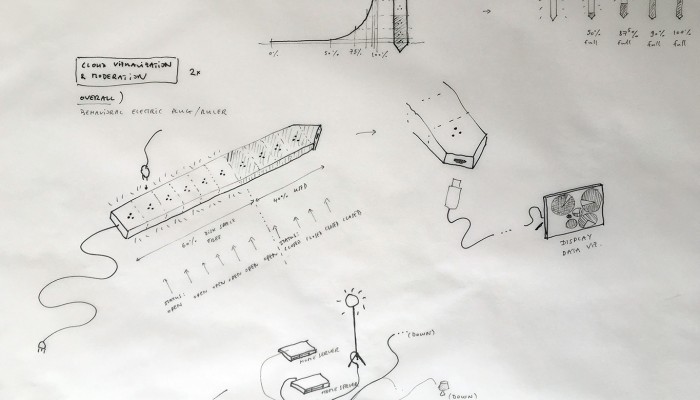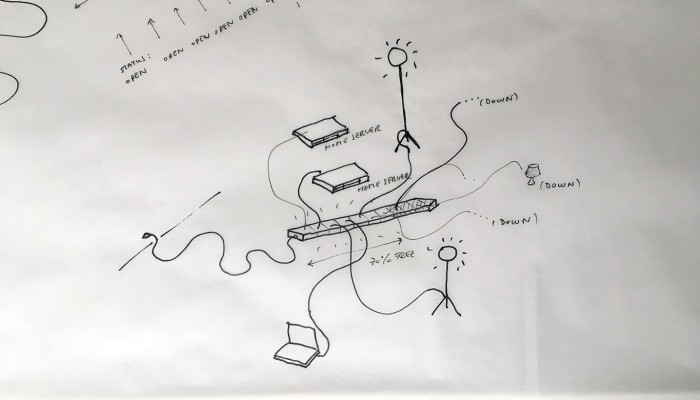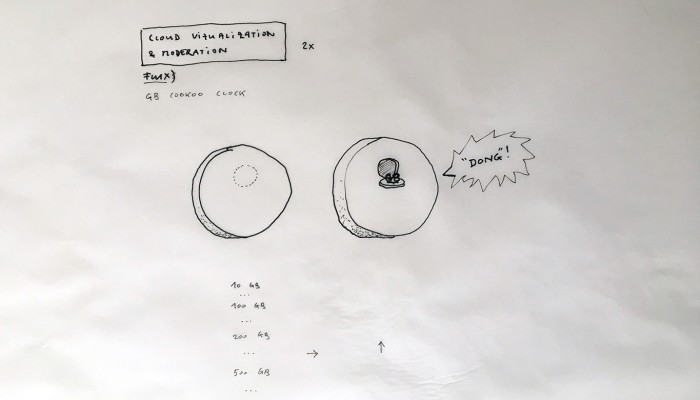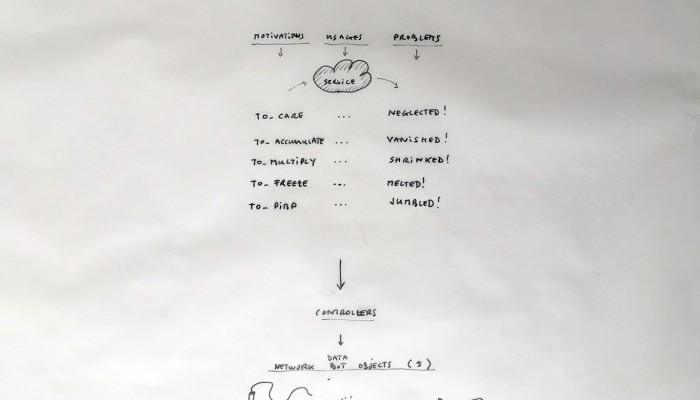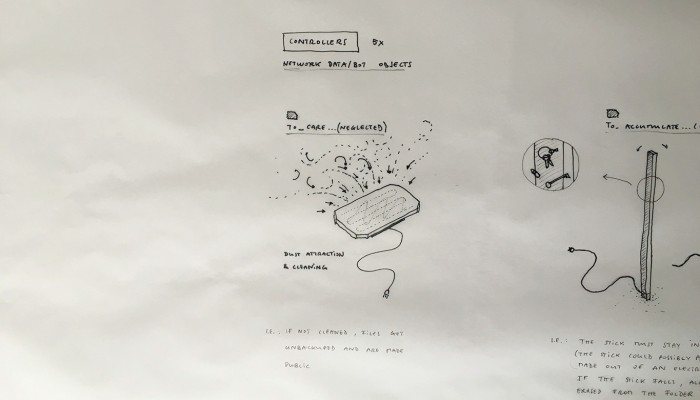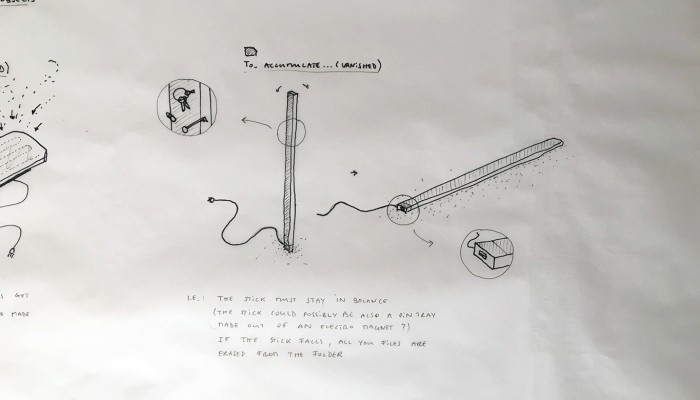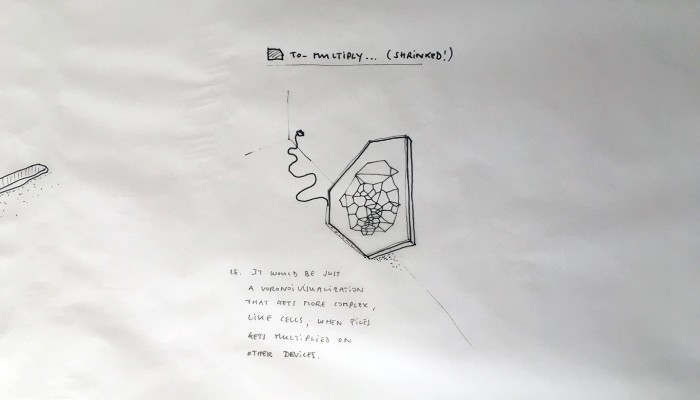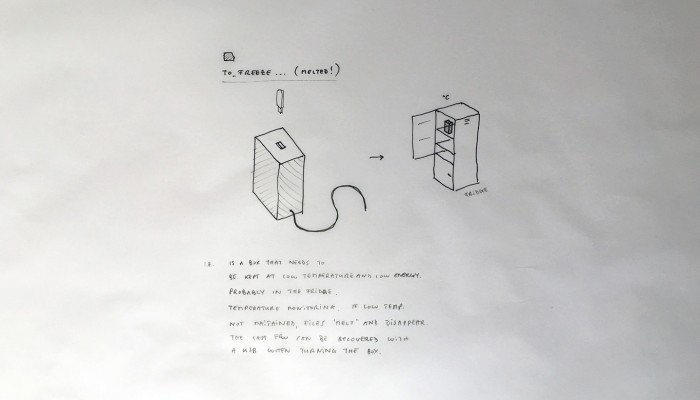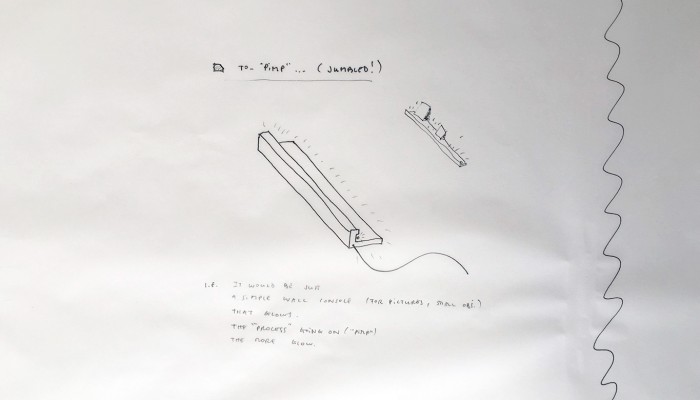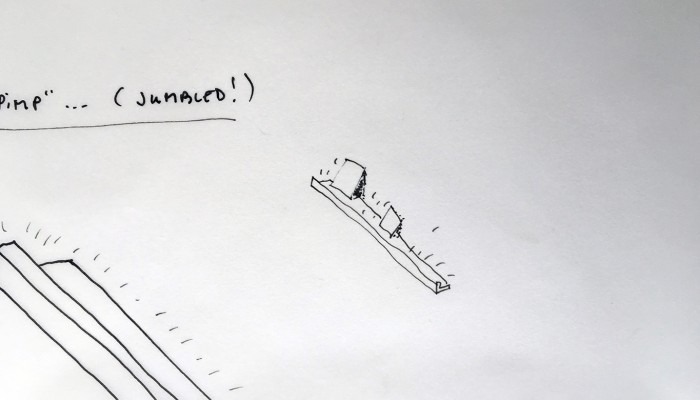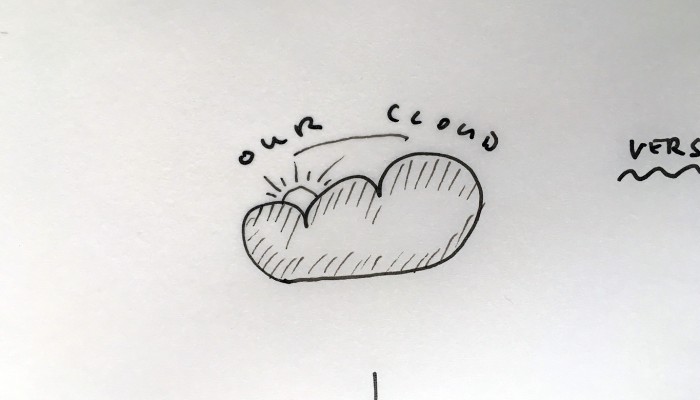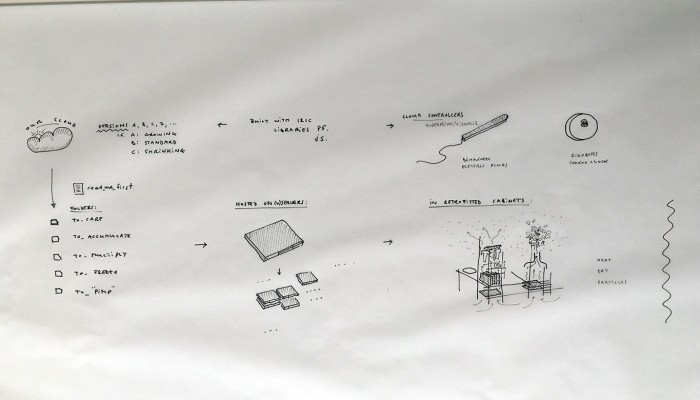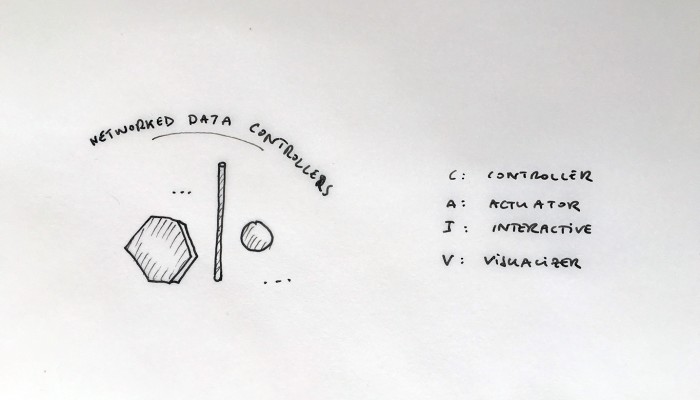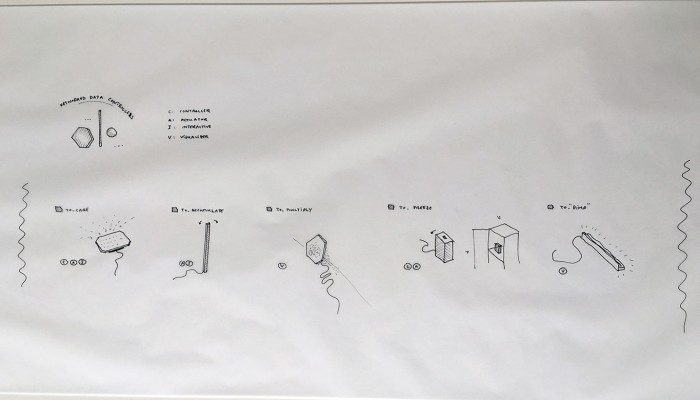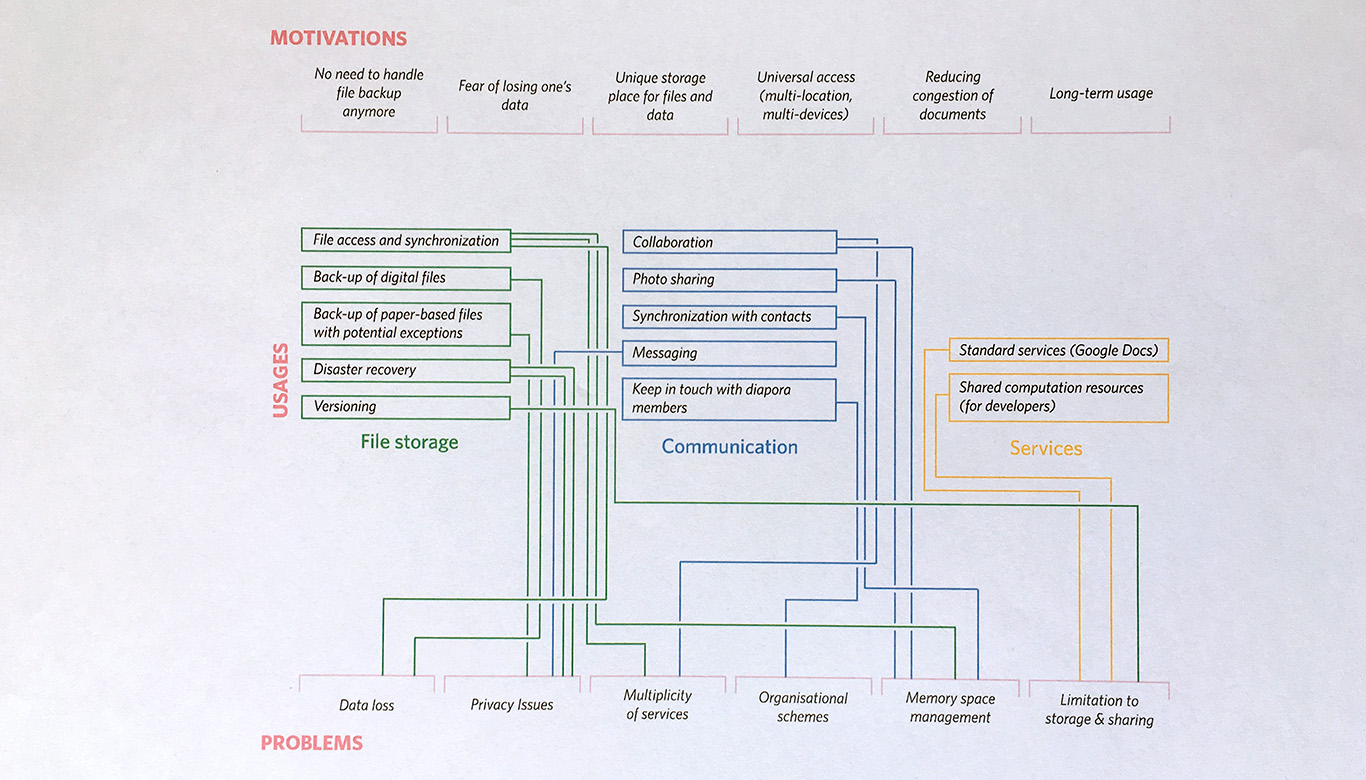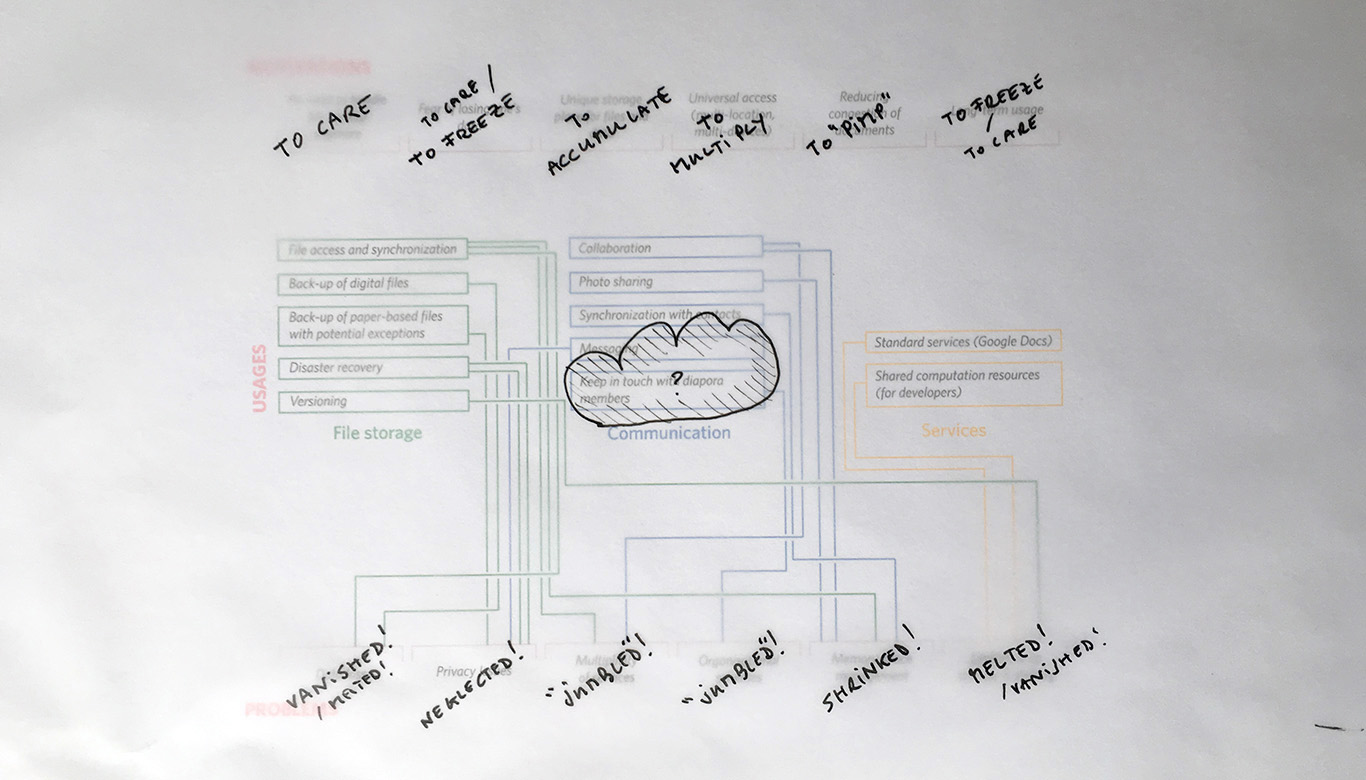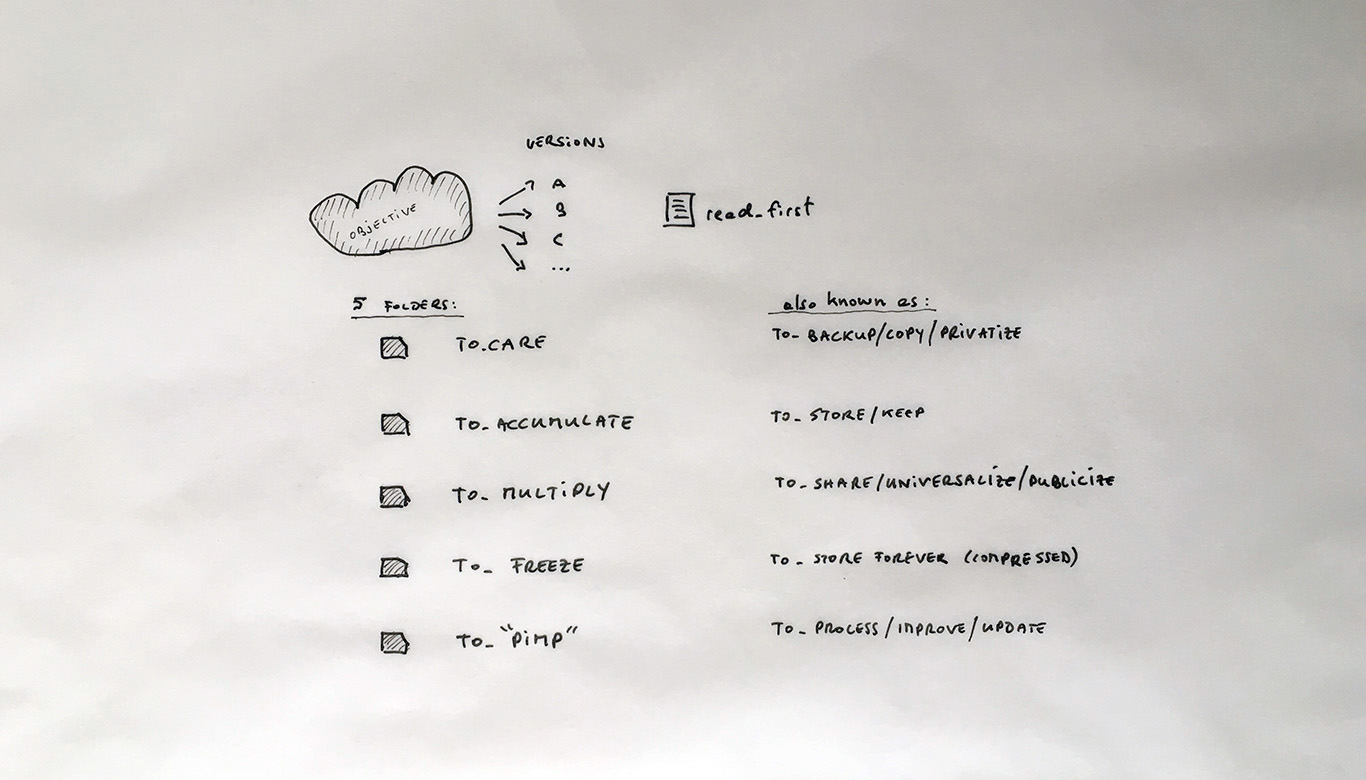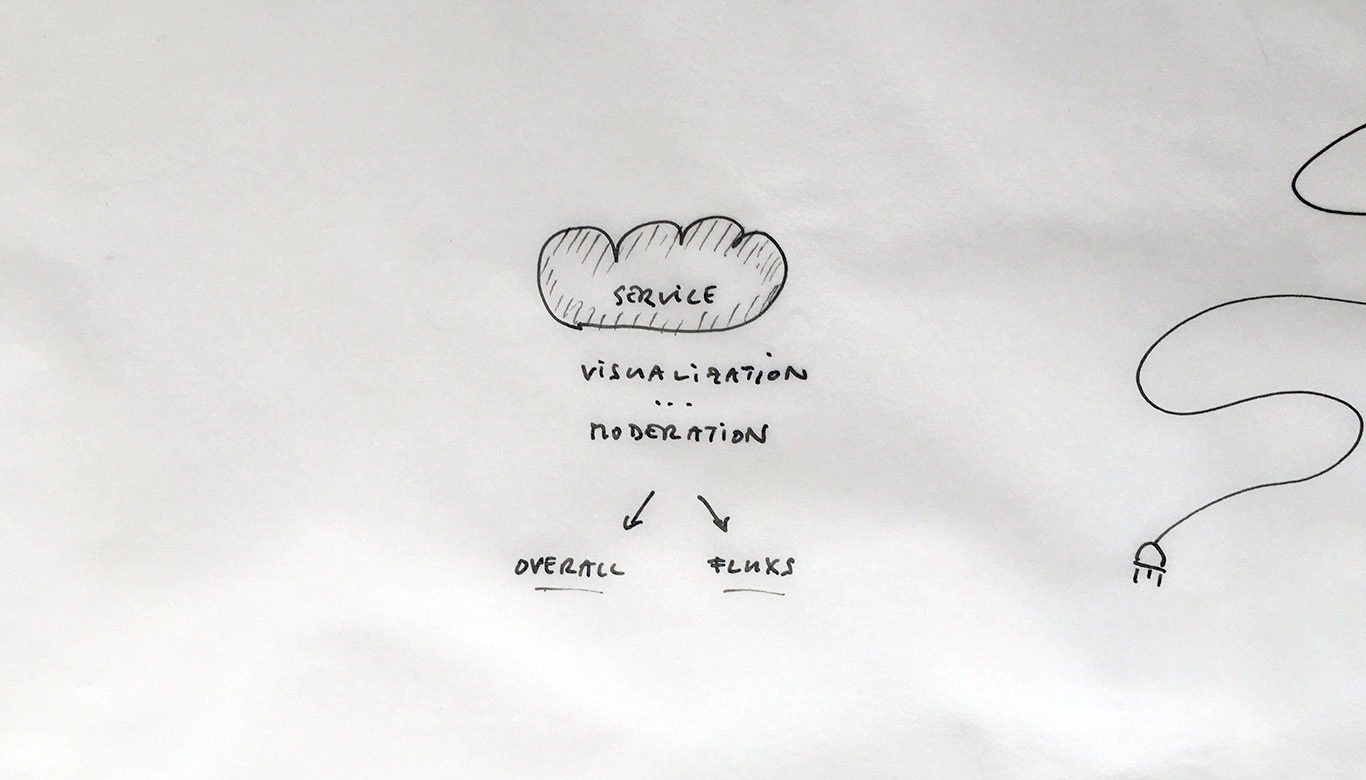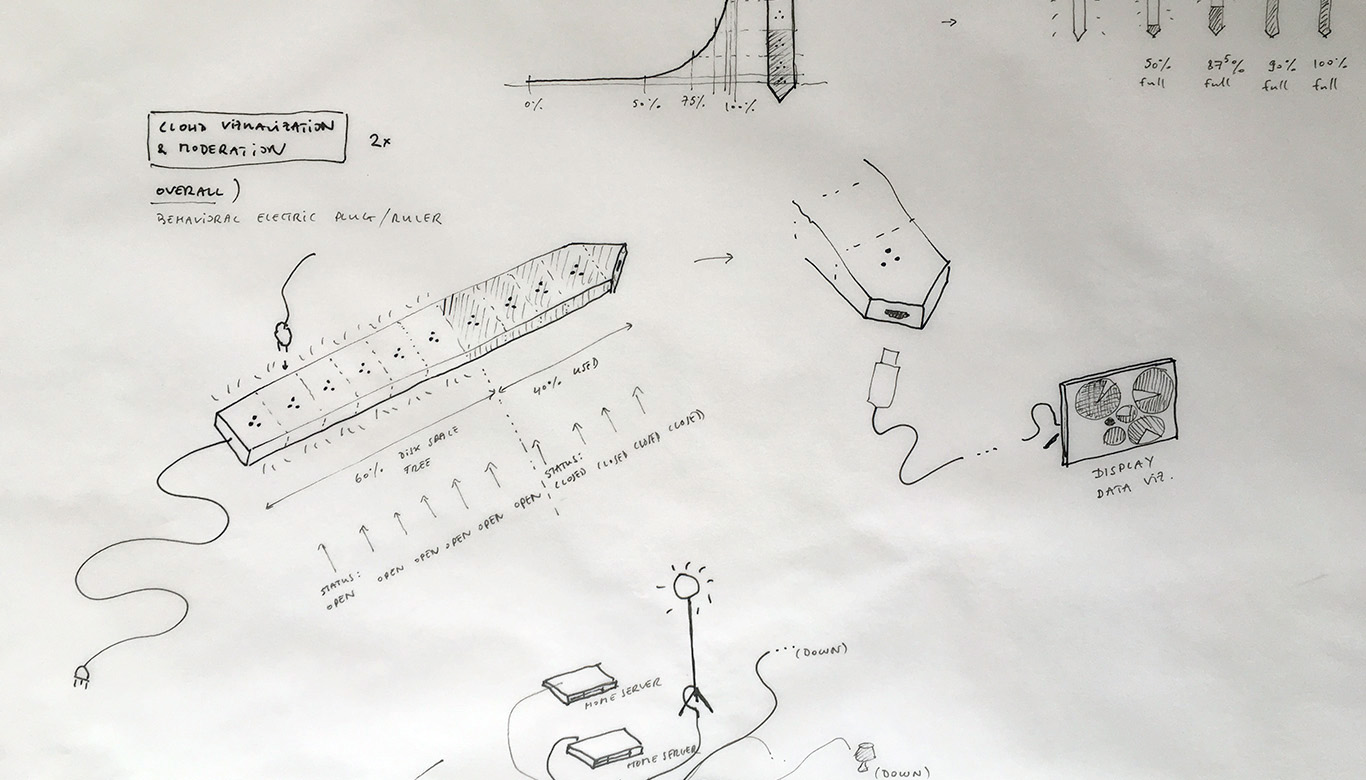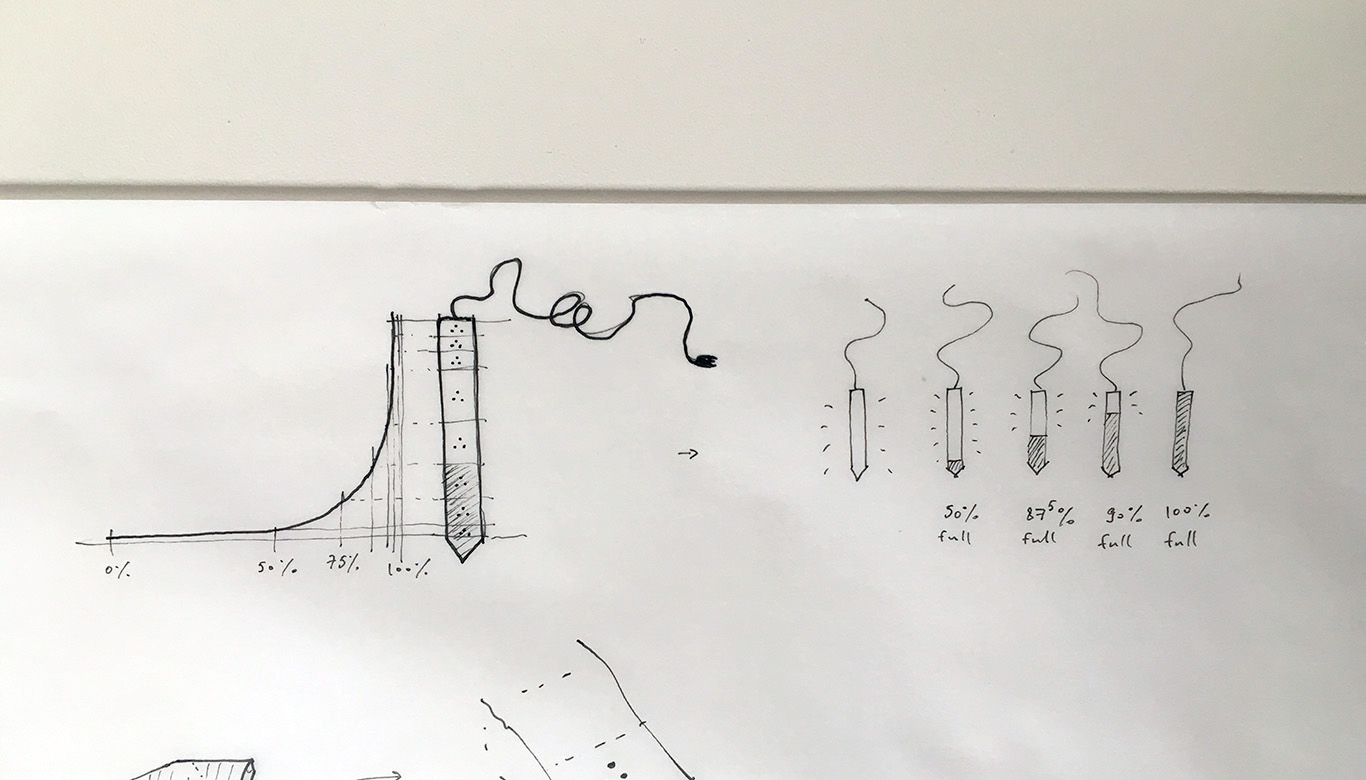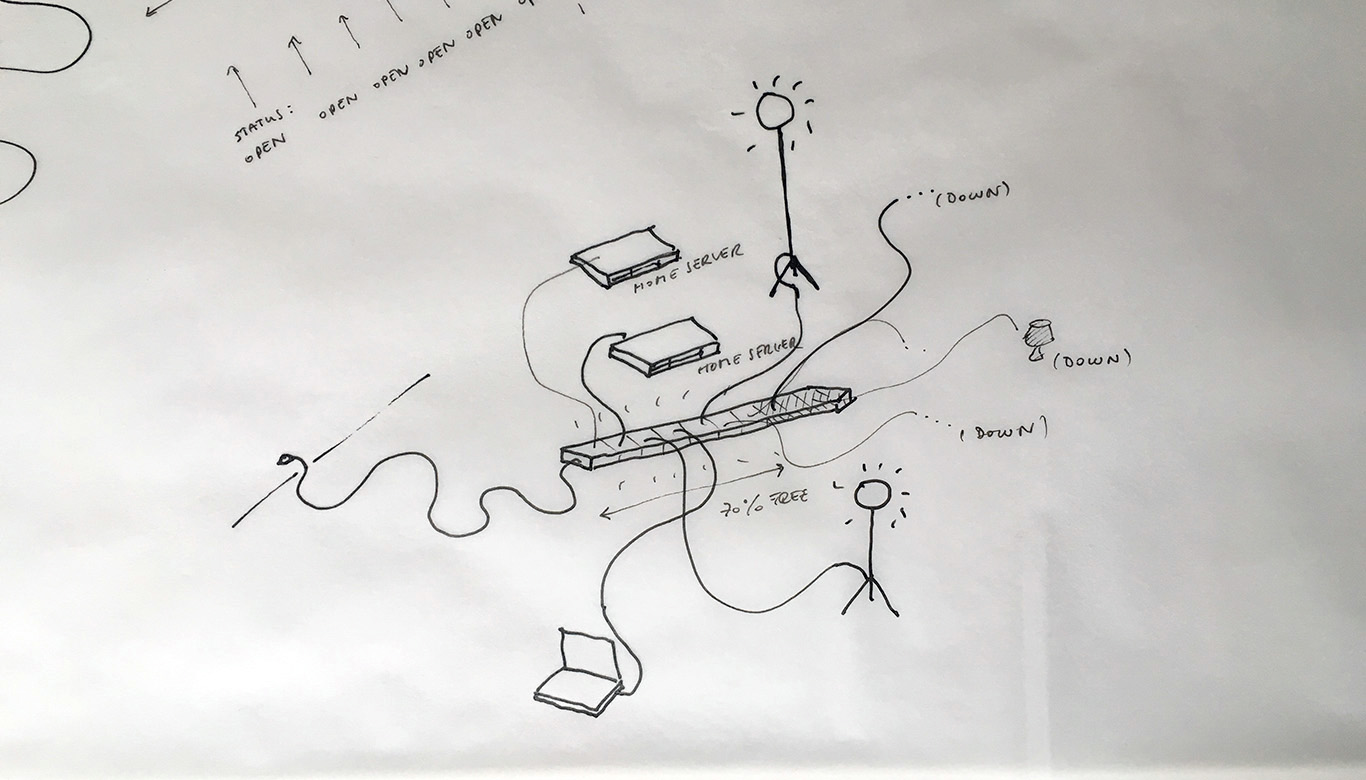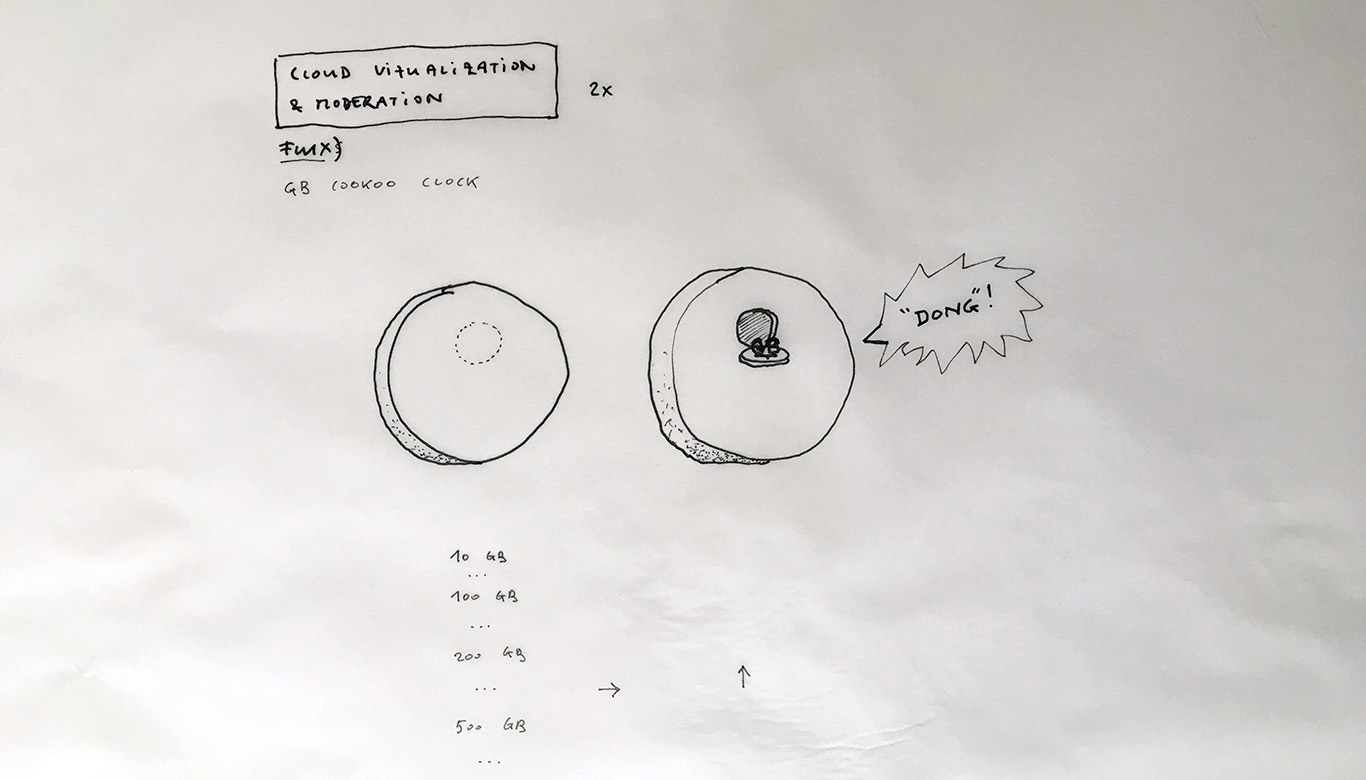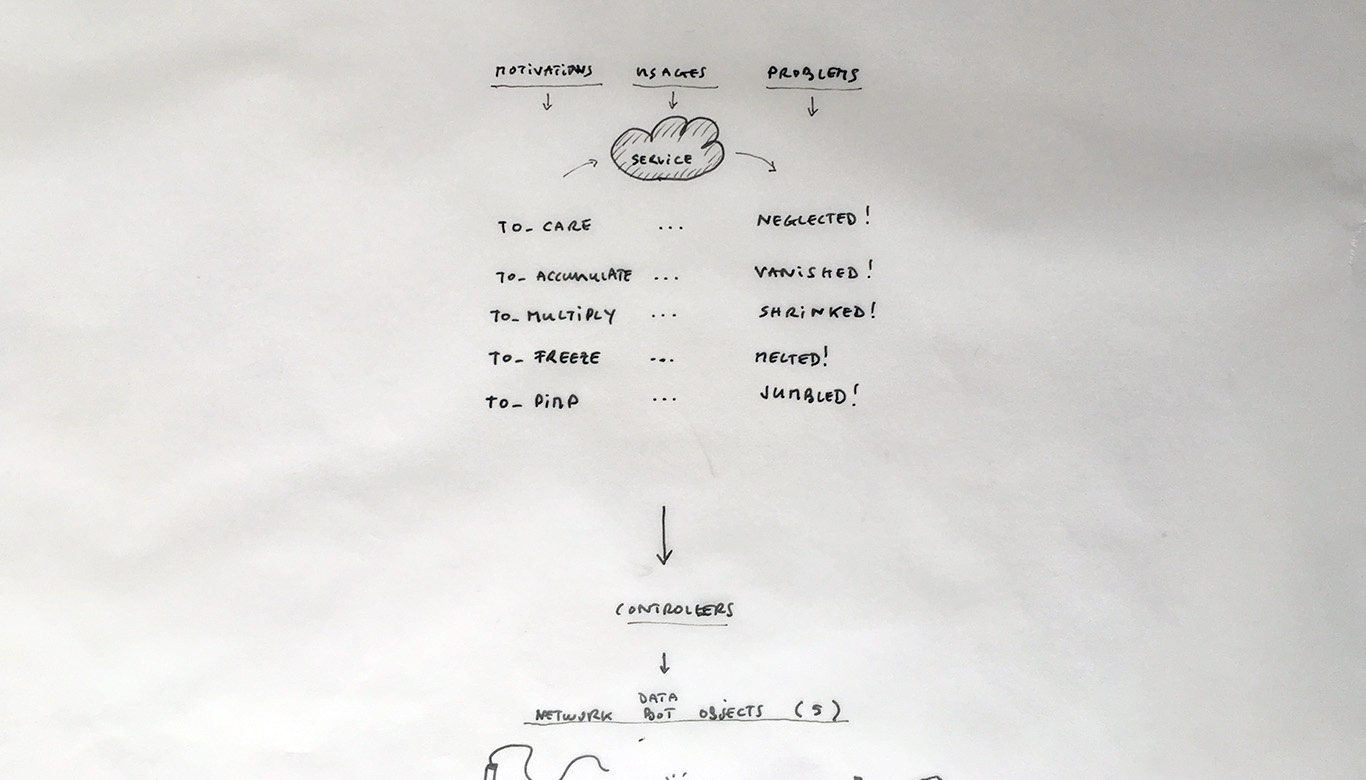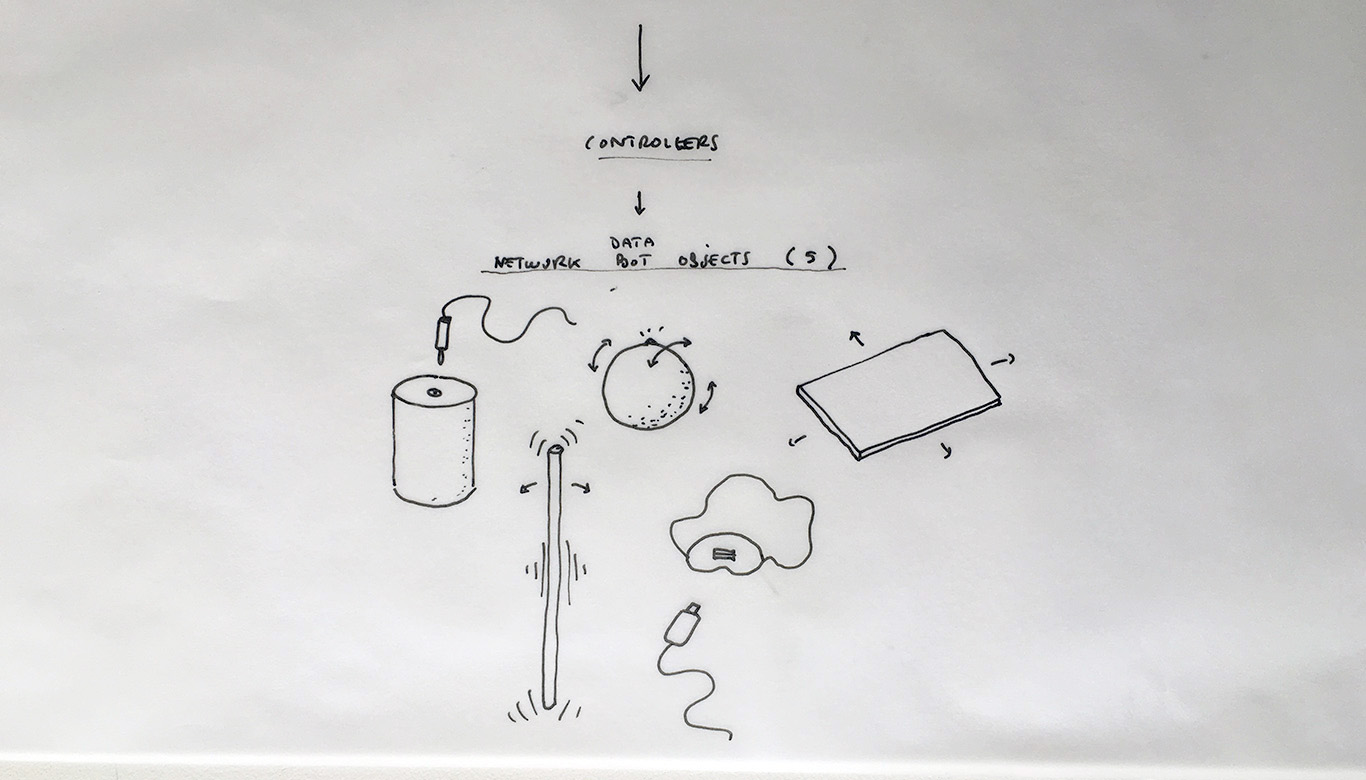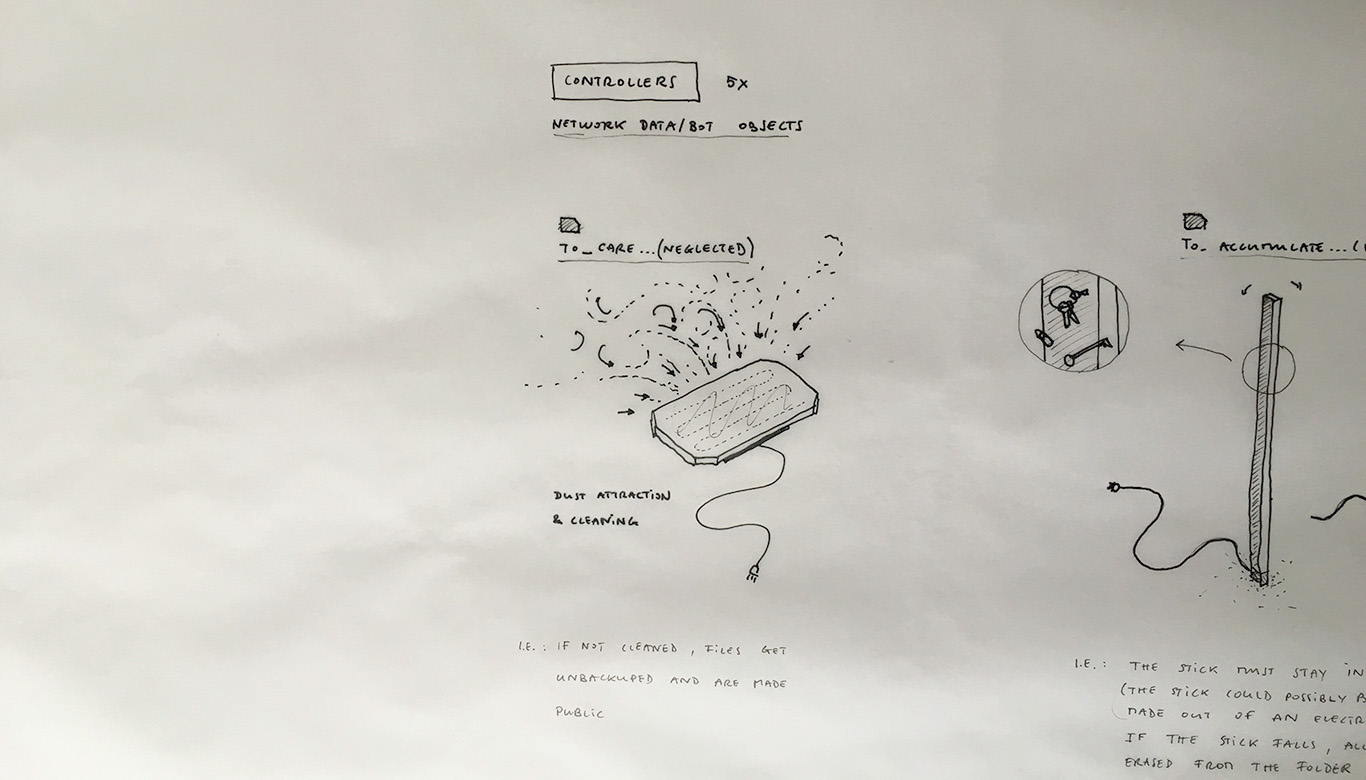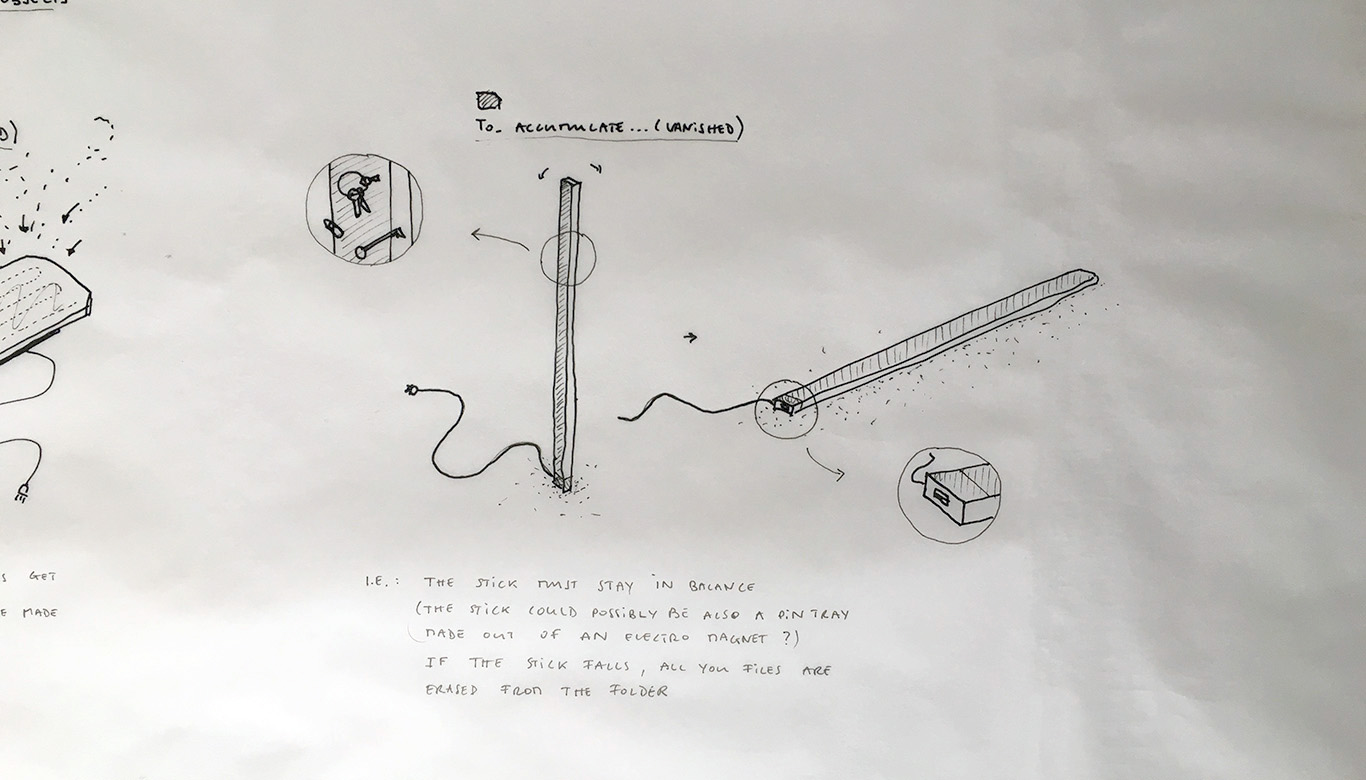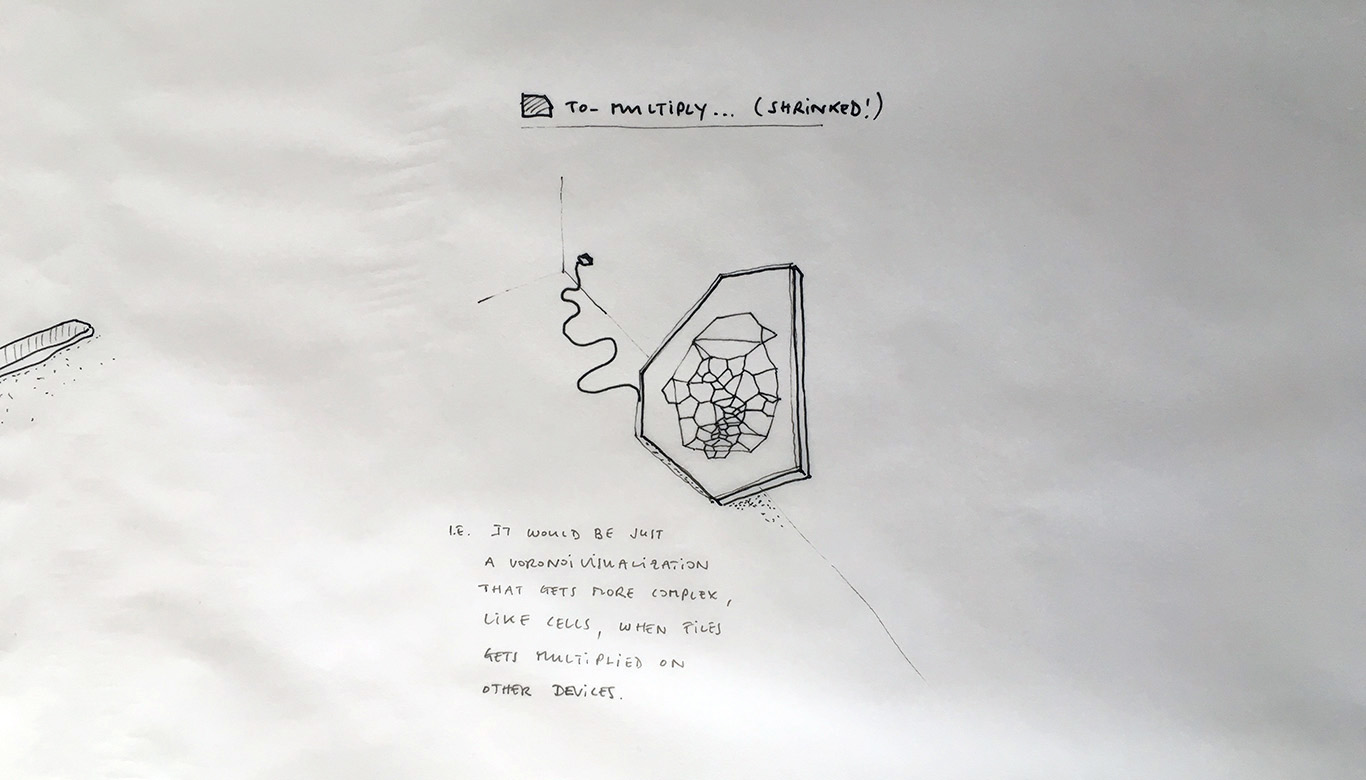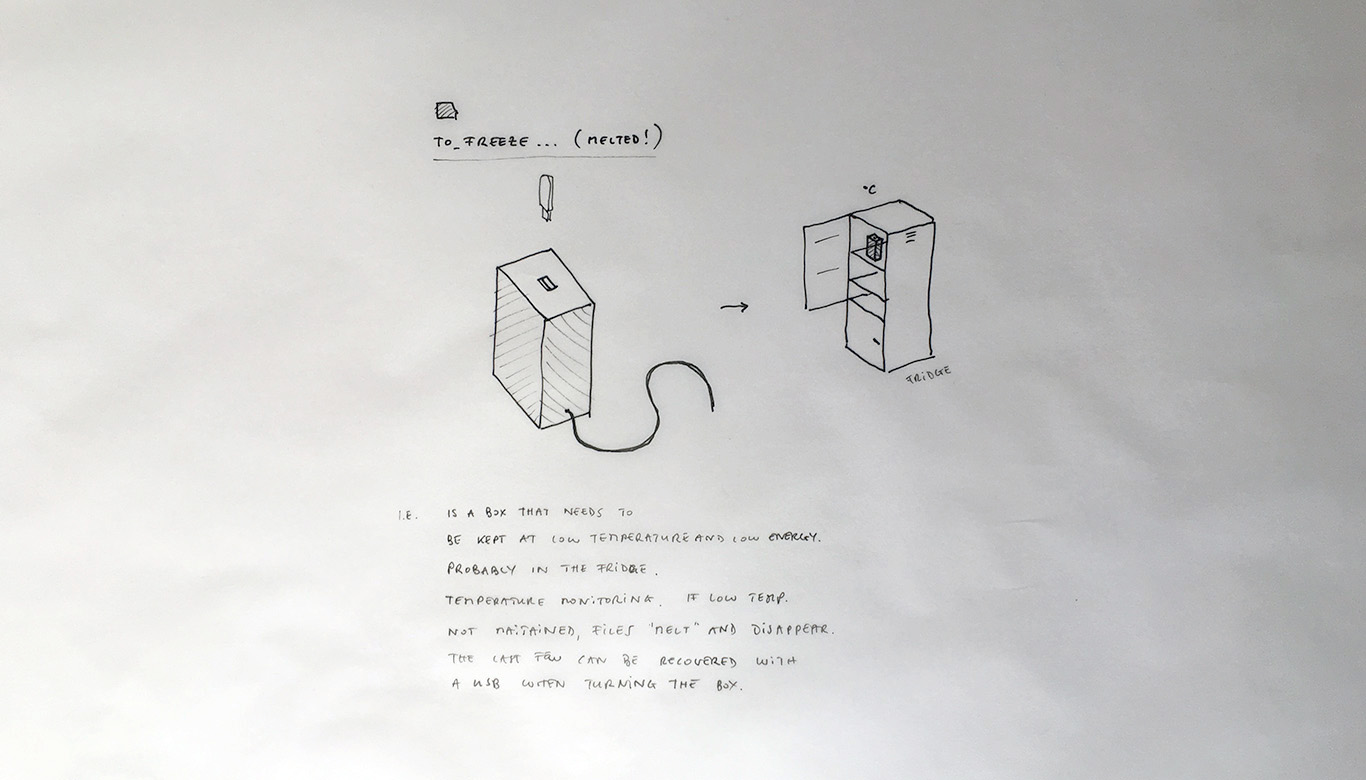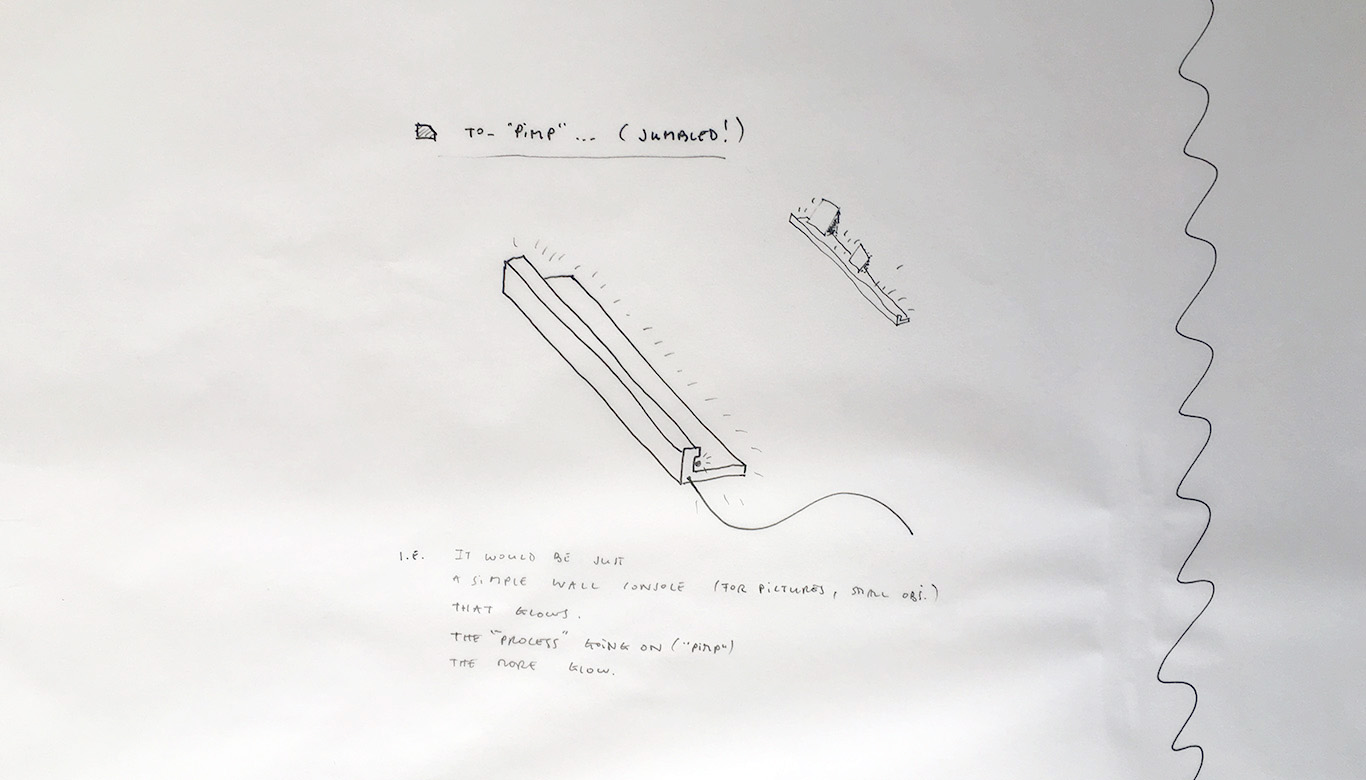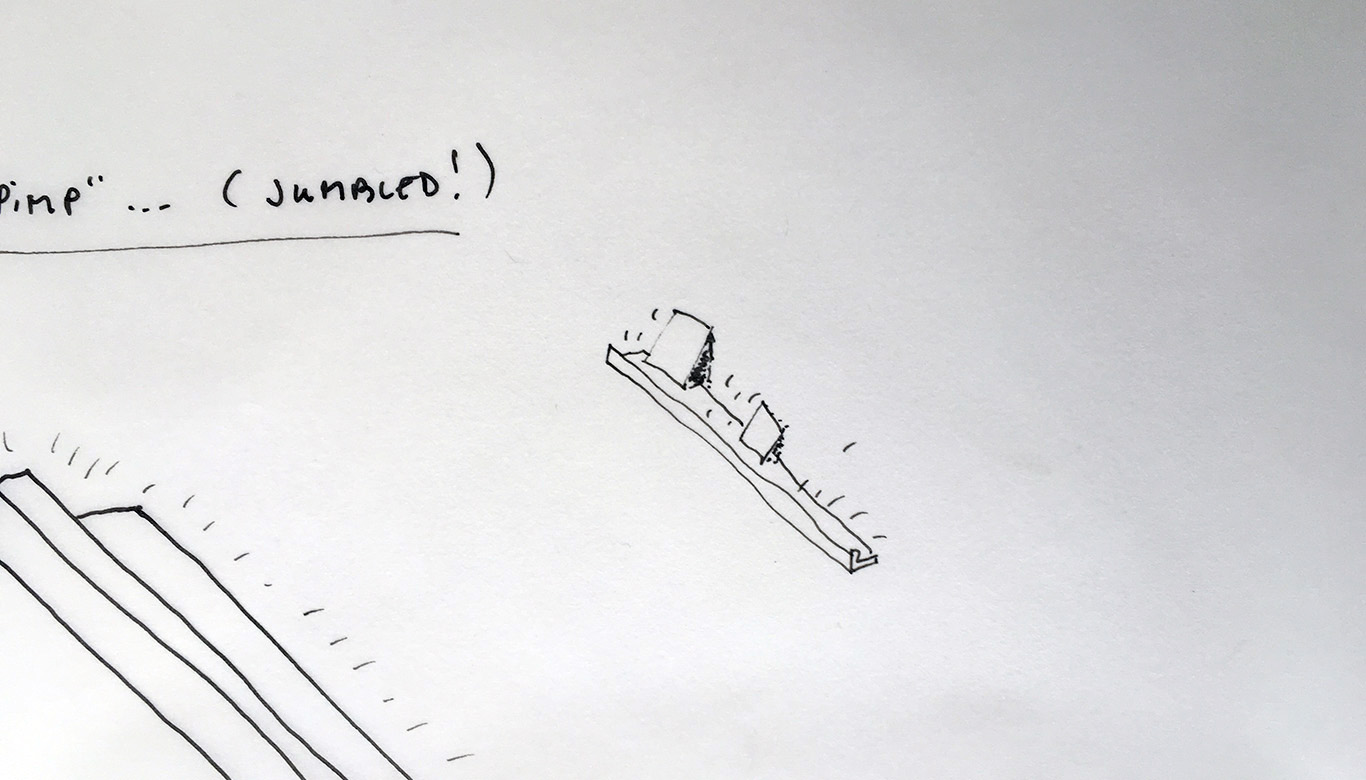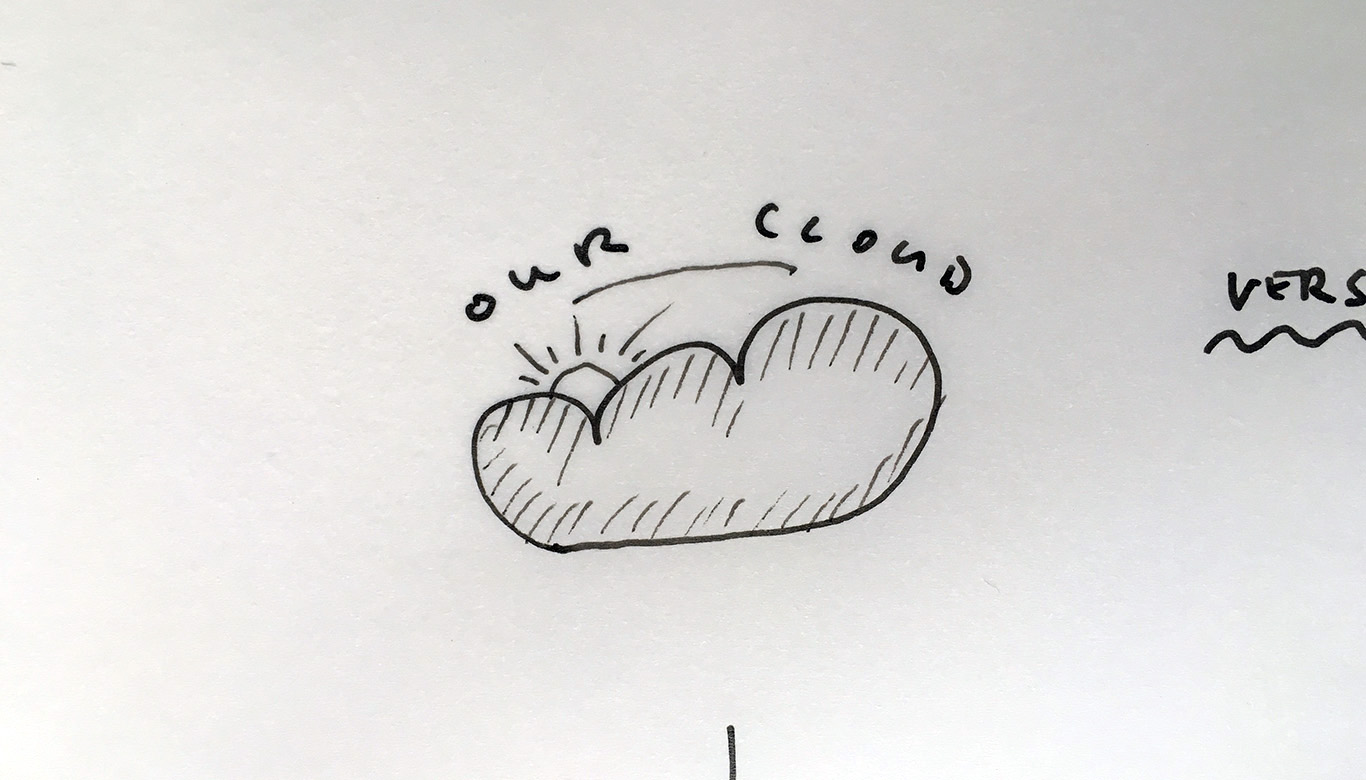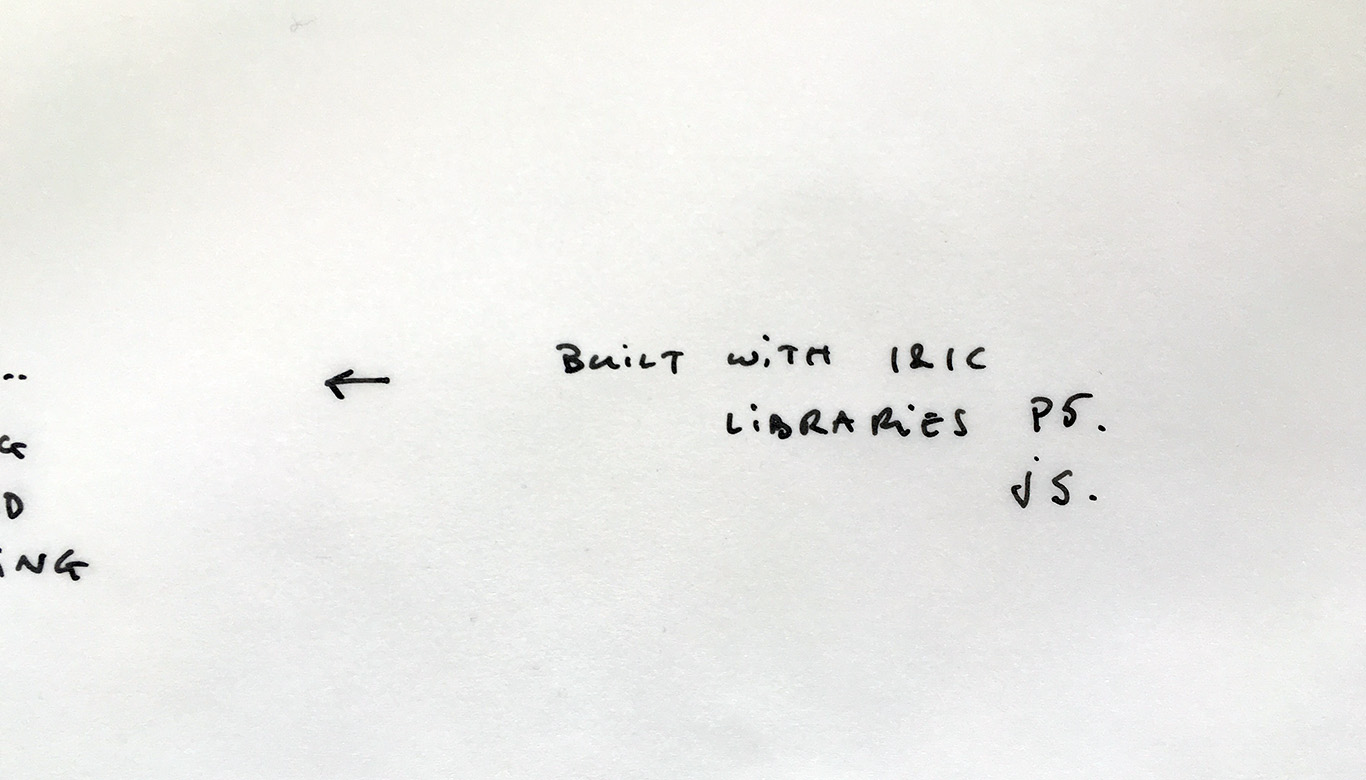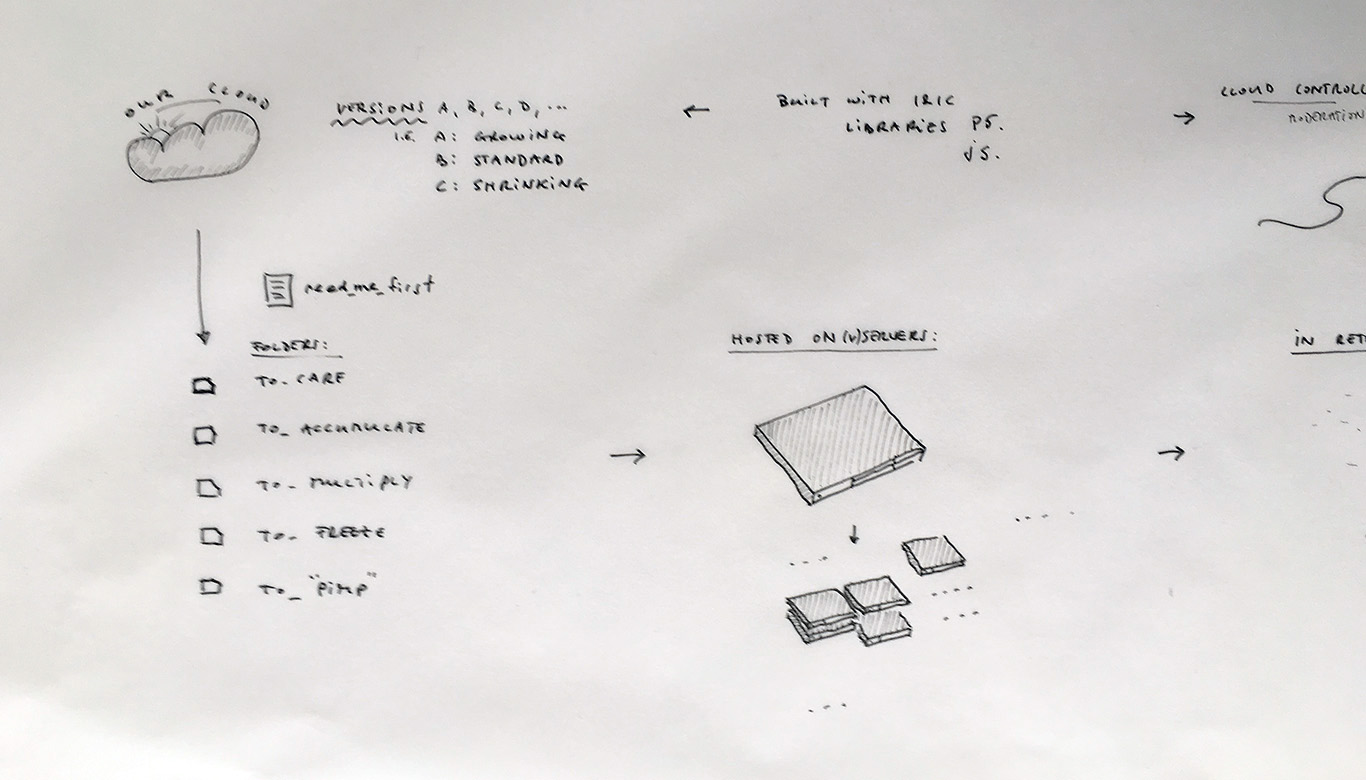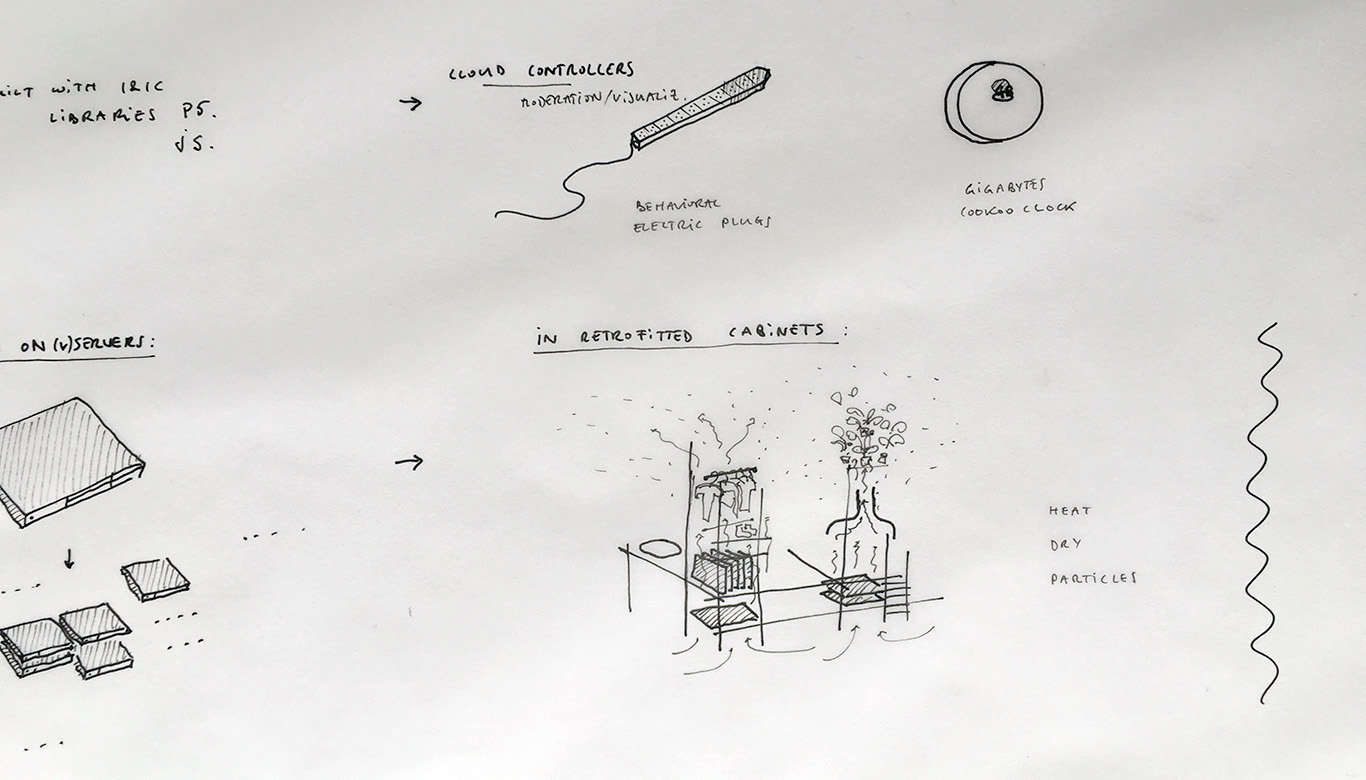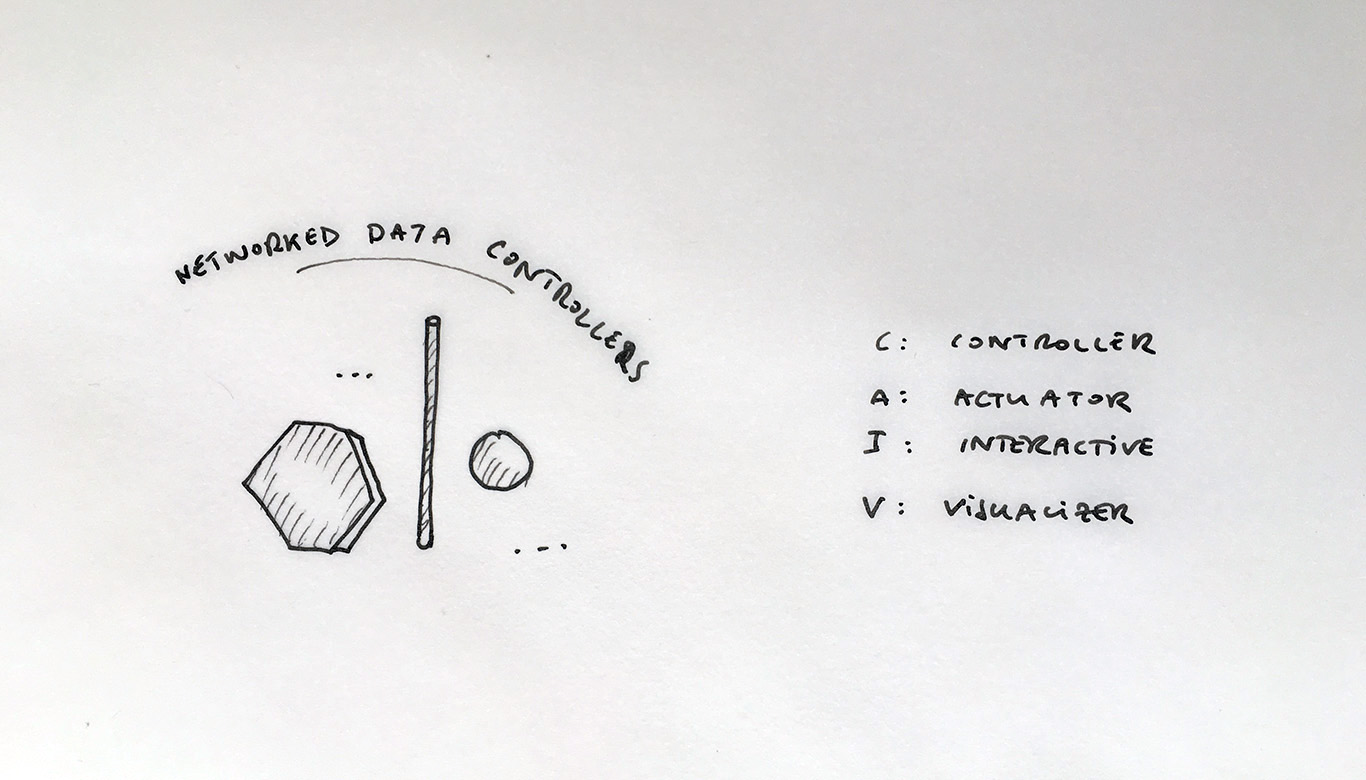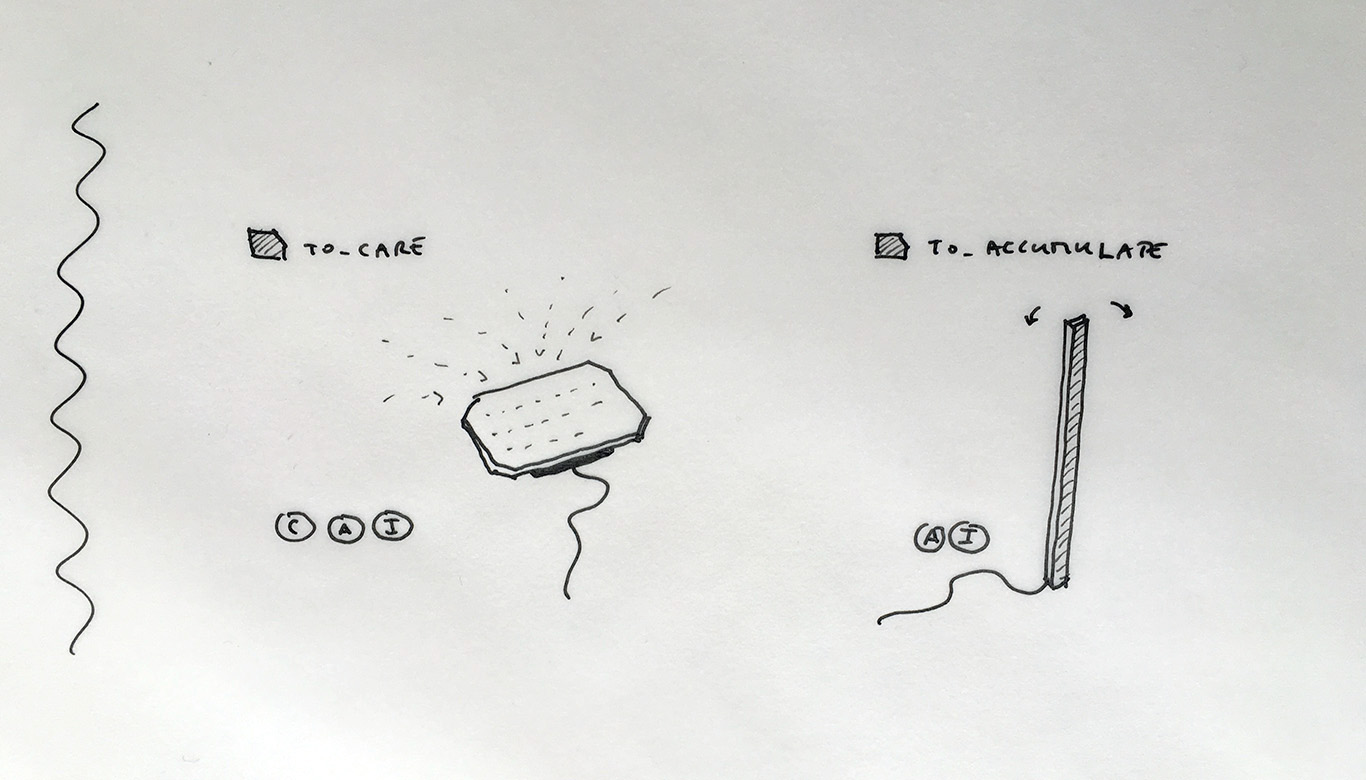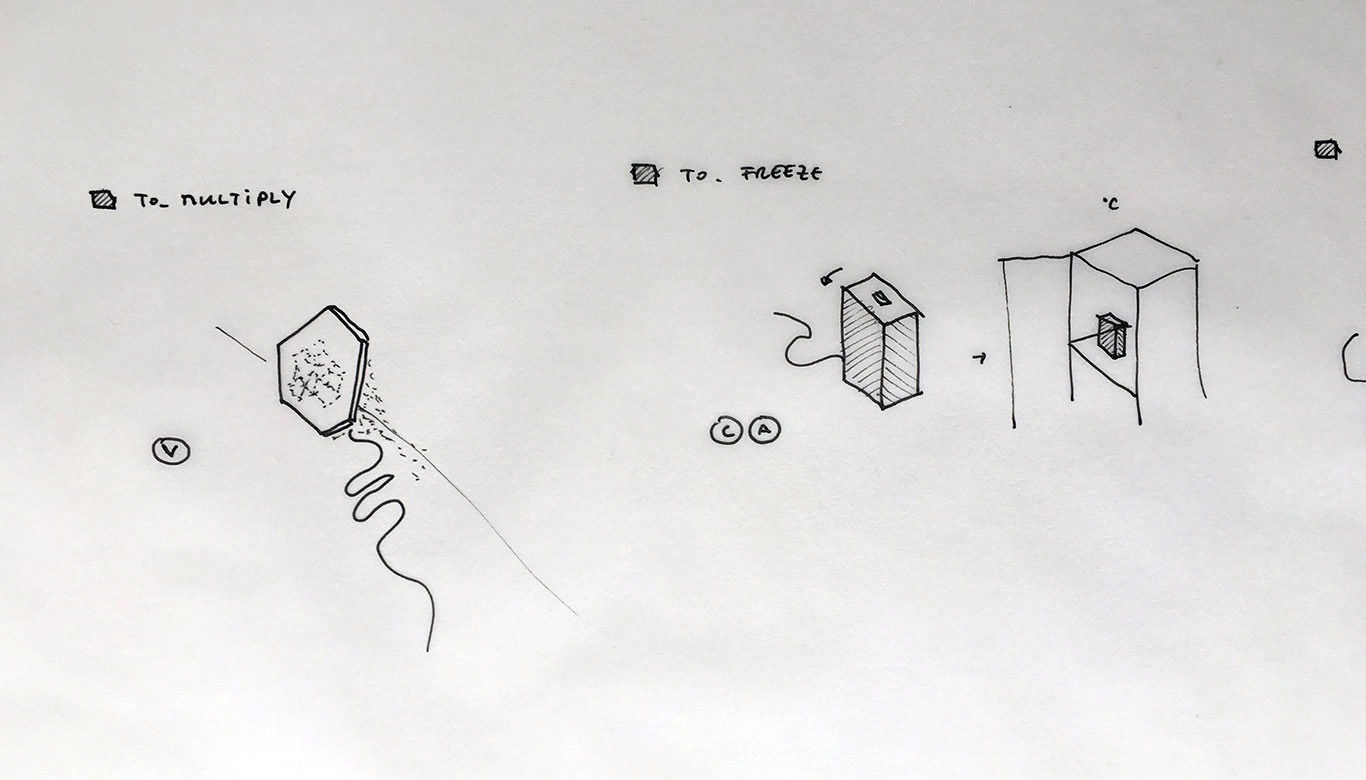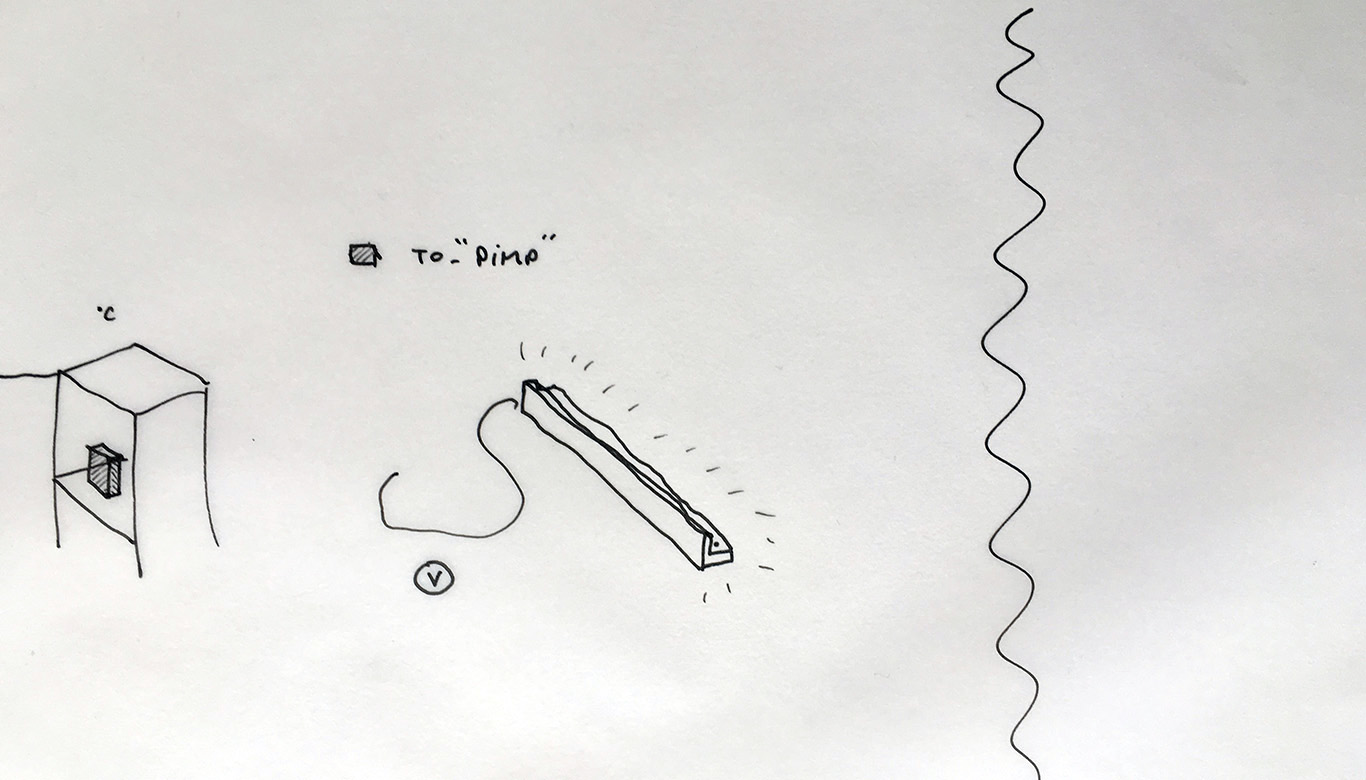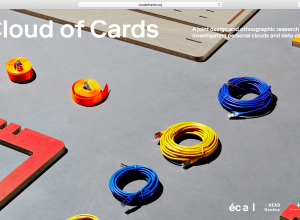This post consists in an important update to the previous note “From design research wrap-up to final artifacts, a design scenario (in scribble mode, #1)“.
It’s main purpose is to narrow down the previously sketched scenario and become more precise about the possible artifacts we will develop. In doing so, the present description shows a likely path and tries to keep some coherence within the overall design that is segmented in four different areas, often combined (software, hardware furniture, responsive objects, visualization). Yet and even so several objects and functions are described and named in this post, it will continue to serve only as a general blueprint for the last phase of our I&IC joint design research, while the final outputs could still largely evolve, based on the same ideas and plan.
These ideas keep their importance though:
Based on the graphic “Motivations <-> Usages <-> Problems” and its description of procedures, based on our “Design Learnings” too, we’ve tried to translate and objectify these into “natural language” of actions (and problems). At this stage, this is still a trial, but we’ve listed five pairs of words that work in opposition (verbs vs. past participles) and that cover the spectrum of functions and procedures: To Care (vs. Neglected!), To Accumulate (vs. Vanished!), To Multiply (vs. Shrinked! ), To Freeze (vs. “Melted!”), To “Pimp” (vs. “Jumbled!”) — all these corresponding to a set of cloud actions and explained with more details below, after the break —
These 5 pairs of terms will drive the development of an alternative, domestic and hopefully objective Cloud (“Our Cloud”), built upon the open source software OwnCloud with the help of our own I&IC OwnCloud Core Processing Library (which will be further edited and editable therefore). This personal Cloud will have the opportunity to be hosted into a new type of diy (and domestic as well) 19″ Cabinet.
The 5 pairs of terms will further drive the implementation of 5 Controllers or Network Data/Bot Objects (“Smart Objects”). The aim of these “controllers” will be to give an everyday physical presence to each user’s personal Cloud, to its 5 main folders, contained files or data and the processes they undergo. The manipulation of some of these objects will include the idea of “natural interface” or “gestures”.
In addition to these 5 physical controllers, 1 or 2 “root objects” could help monitor and possibly moderate the overall behavior of “Our Cloud”.
For the development of these “smart objects”, we’ve decide to take into account the kind of objects or infrastructure that are already present in a domestic environment, things like single functional objects (i.e. lamps, electric plugs, consoles, mirrors, clocks, etc.) and revisit them with a slight sculptural approach. We’ve also decided to consider a “language” that takes into account “invisibility” or “immateriality” (i.e. electricity, electrostatics, magnets, light, reflections, air currents or temperature, dust).
…
Finally, all of the above should be distributed as open source.
…
A) “Motivations <-> Usages <-> Problems” graphic from the ethnographic field study is replaced by 5 “natural” terms (verbs of actions) that cover and segment a technical terminology of files manipulation and processing: To_Care = to backup, to copy, to privatize / To_Accumulate = to store, to keep / To_Multiply = to share, to universalize, to publicize / To_Freeze = to store compressed “forever”, to hide / To_”Pimp” = to process, to update, to improve.
As already stated, these five terms (verbs) will be subject to further modifications depending on the exact final direction the project will take.
B) The overall Cloud service and its real time behavior can be visualized and somehow moderated. An Overall View would give information about the filling percentage of the hard drives –by doing so, it could help moderate its use– while a Flux View would only give information about the quantity of data stored or erased.
C) Cloud visualization and moderation #1, Overall view: the idea would be to redesign the long power strip and give it a behavior twist.
This behavior would be directly linked to the filling percentage (%) of each user’s Our Cloud: The more the cloud is full, the less plugs are active and opened (give electricity). Connected to standard home’s devices like lights or other electric furniture would turn the overall setup into visualization device (of the filling of the hard drives). By extension, we could even plug the Cloud itself into this plug and turn it into an autonomous, yet risky self moderator.
D) Cloud visualization and moderation #2, Flux view: a GigaBytes cookoo clock! It would act like a mural clock, unless for gigabytes in your personal cloud. Every 10 GB it rings, makes a special sound for 100 GB and a concert every 1T.
E) To_Care (vs. Neglected!), To_Accumulate (vs. Vanished!), To_Multiply (vs. Shrinked! ), To_Freeze (vs. “Melted!”), To_”Pimp” (vs. “Jumbled!”): 5 root folders in Our Cloud.
The combination of 5 pairs of verbs (actions) vs. past participles would drive the design of 5 controllers (smart objects or networked data/bot objects, similar to the ones designed during Botcave workshop). The 5 controllers drawn here evoke roughly the ideas of vibrating objects, unstable sticks, of file retrieval, of natural manipulation and feedback. What they can concretely become is sketched with more details below.
F) 5 controllers, 5 responsive objects. These controllers could also possibly be plugged in the Overall View device (power strip), therefore working or not depending on the cloud’s filling.
To_Care (vs. Neglected!) could be an electrostatic shiny large plate that attracts dust. Doing so, it would help clean the air for the servers possibly located in the same room. It would ask to be cleaned regularly otherwise files contained in the To_Care folder would become “Neglected!” (backups erased and files publicized!)
To_Accumulate (vs. Vanished!) could be a long stick in precarious balance. It could also possibly be an electro-magnet acting like a pin tray plugged into the power strip. If the stick falls, all your accumulated files would be erased, “Vanished!”, except one that could be retrieved from the bottom usb port.
To_Multiply (vs. Shrinked! ) could be linked to a folder in Our Cloud from which all the contained files would be multiplied on all your devices and on fellow cloud users disk (same folder) and their devices. When an other user on a different cloud would add or remove files, it would also act in your own To_Multiply folder, by adding or removing files. Therefore, the files would be “multiplied” or the folder “shrinked” depending on common actions. The device would only visualize the process of multiplication or shrinking behind a two-way mirror through the visualization of a dynamic voronoi graphic.
To_Freeze (vs. “Melted!”) could be a device that helps you keep your files “stored forever compressed and private”. You would need to put this device in your fridge and keep it at low temperature. When 4°C would be reached, the files in the To_Freeze folder would be compressed and privatized. If the temperature rises, the files would first be uncompressed, then made accessible and finally be publicized (Melted!). A few files could be retrieved fro the box itself by turning it.
To_”Pimp” (vs. “Jumbled!”) could be a mural console with a glowing UV light. The more processes on the files the more it would glow and transform the appearance of the images exposed.
Complete “Our (House) Cloud” Scenario, resume:
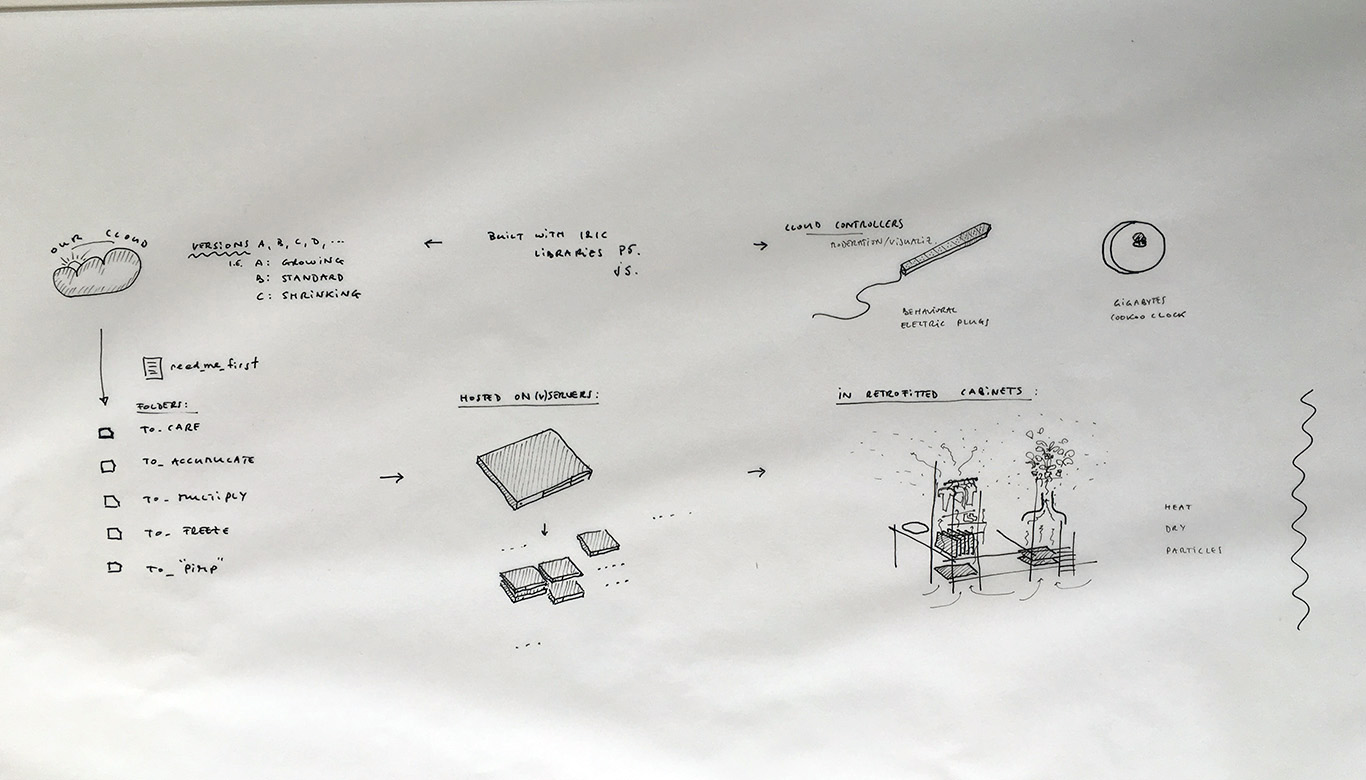 1) Based on the open source software OwnCloud and with the help of I&IC OwnCloud Core Processing Libraries, an alternative version of the cloud (“Our (House) Cloud”) would be built.
1) Based on the open source software OwnCloud and with the help of I&IC OwnCloud Core Processing Libraries, an alternative version of the cloud (“Our (House) Cloud”) would be built.
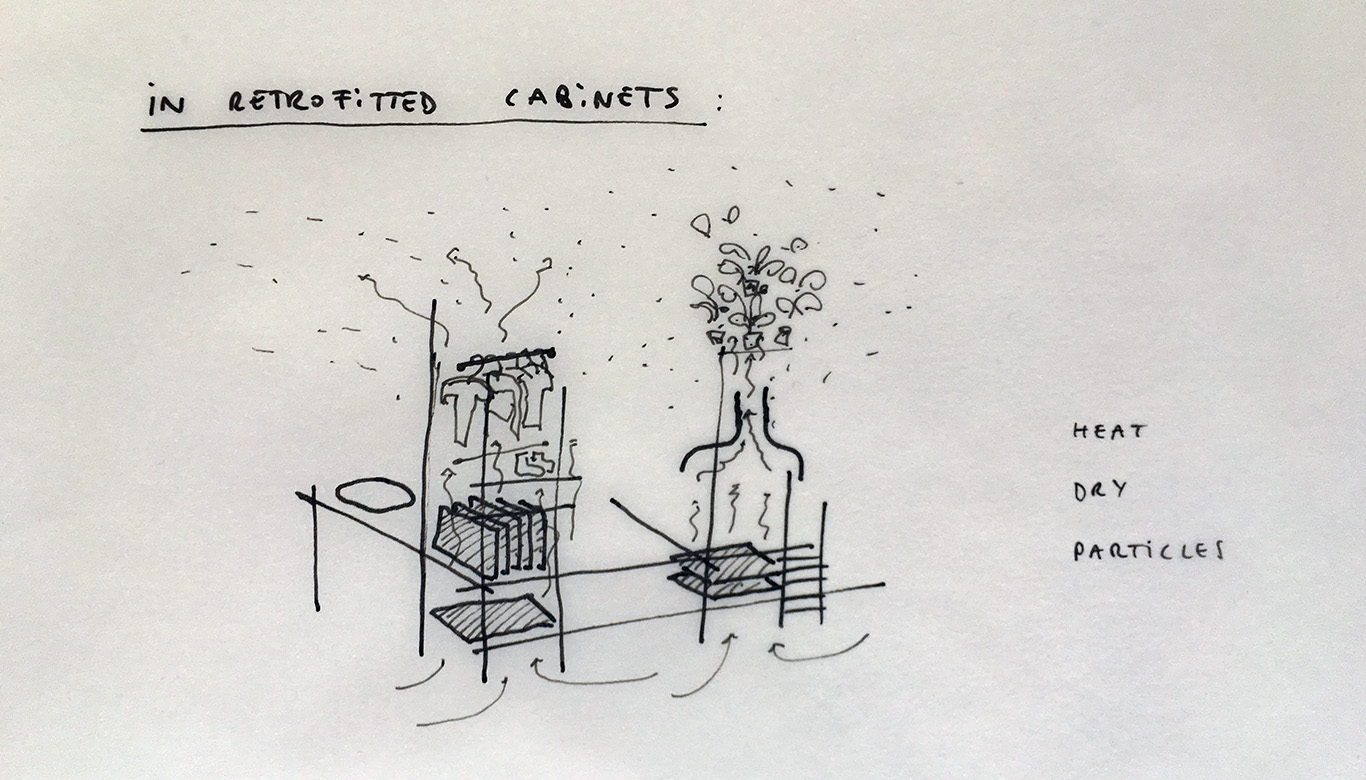
2) “Our (House) Cloud” would always contain the 5 same root folders (To_Care / To_Accumulate / To_Multiply / To_Freeze / To_”Pimp” ). Some of these folders and their content would be shared between all “Our (House) Cloud” users. It would be hosted on conventional servers within a retrofitted 19″ Cabinet (“Our 19″ Cabinet”), a mix between a living structure, a house data center and a 19″ computer cabinet.
2 responsive objects would help monitor the overall cloud.
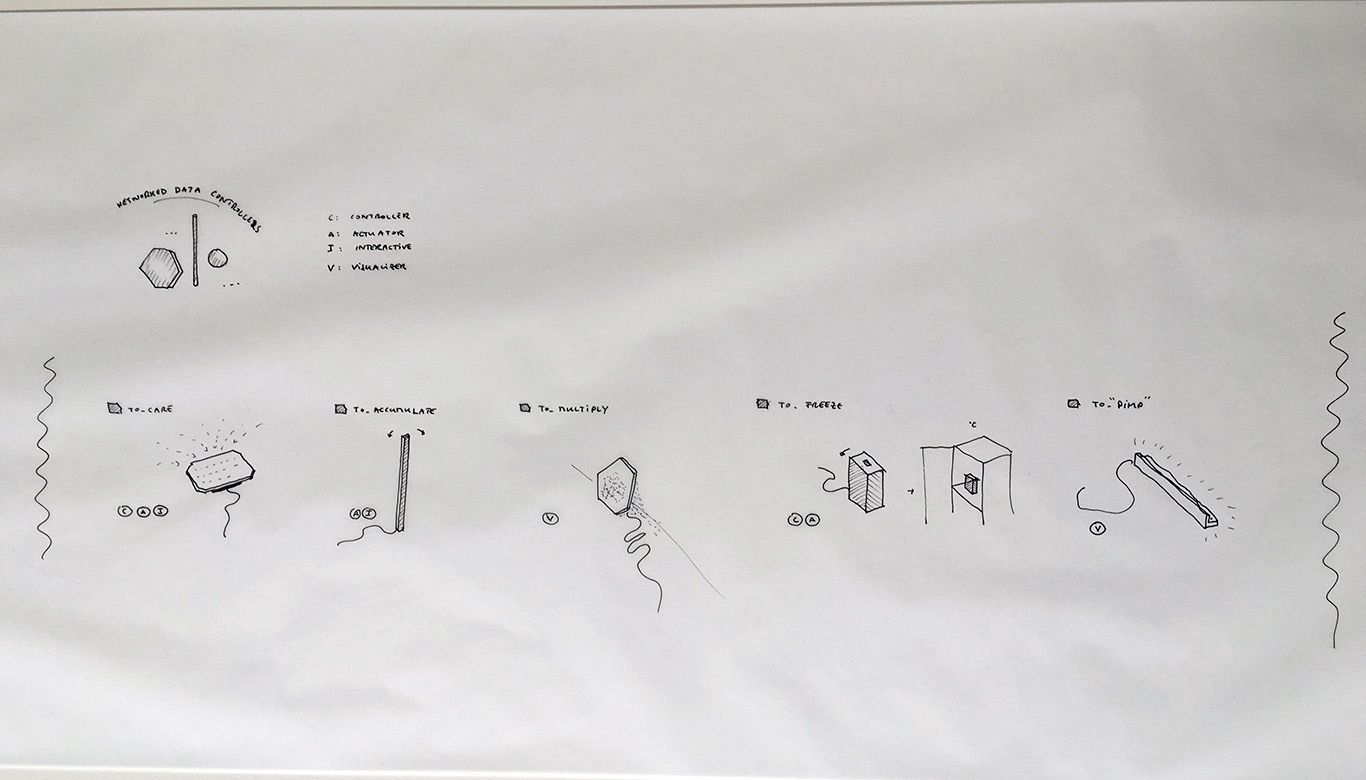 3) 5 controllers (responsive objects) would help give a domestic and continuous presence to your files and folders.
3) 5 controllers (responsive objects) would help give a domestic and continuous presence to your files and folders.
4) 5 responsive objects as controllers: A low table (To_Care), a long vertical stick (To_Accumulate), a voronoi-like screen and dynamic visualization (To_Multiply), a box in the fridge (To_Freeze), a mural console (To_”Pimp”).

